Angiogenesis inhibitors for the treatment of epithelial ovarian cancer
- PMID: 37185961
- PMCID: PMC10111509
- DOI: 10.1002/14651858.CD007930.pub3
Angiogenesis inhibitors for the treatment of epithelial ovarian cancer
Abstract
Background: Many women, and other females, with epithelial ovarian cancer (EOC) develop resistance to conventional chemotherapy drugs. Drugs that inhibit angiogenesis (development of new blood vessels), essential for tumour growth, control cancer growth by denying blood supply to tumour nodules.
Objectives: To compare the effectiveness and toxicities of angiogenesis inhibitors for treatment of epithelial ovarian cancer (EOC).
Search methods: We identified randomised controlled trials (RCTs) by searching CENTRAL, MEDLINE and Embase (from 1990 to 30 September 2022). We searched clinical trials registers and contacted investigators of completed and ongoing trials for further information.
Selection criteria: RCTs comparing angiogenesis inhibitors with standard chemotherapy, other types of anti-cancer treatment, other angiogenesis inhibitors with or without other treatments, or placebo/no treatment in a maintenance setting, in women with EOC. DATA COLLECTION AND ANALYSIS: We used standard methodological procedures expected by Cochrane. Our outcomes were overall survival (OS), progression-free survival (PFS), quality of life (QoL), adverse events (grade 3 and above) and hypertension (grade 2 and above).
Main results: We identified 50 studies (14,836 participants) for inclusion (including five studies from the previous version of this review): 13 solely in females with newly-diagnosed EOC and 37 in females with recurrent EOC (nine studies in platinum-sensitive EOC; 19 in platinum-resistant EOC; nine with studies with mixed or unclear platinum sensitivity). The main results are presented below. Newly-diagnosed EOC Bevacizumab, a monoclonal antibody that binds vascular endothelial growth factor (VEGF), given with chemotherapy and continued as maintenance, likely results in little to no difference in OS compared to chemotherapy alone (hazard ratio (HR) 0.97, 95% confidence interval (CI) 0.88 to 1.07; 2 studies, 2776 participants; moderate-certainty evidence). Evidence is very uncertain for PFS (HR 0.82, 95% CI 0.64 to 1.05; 2 studies, 2746 participants; very low-certainty evidence), although the combination results in a slight reduction in global QoL (mean difference (MD) -6.4, 95% CI -8.86 to -3.94; 1 study, 890 participants; high-certainty evidence). The combination likely increases any adverse event (grade ≥ 3) (risk ratio (RR) 1.16, 95% CI 1.07 to 1.26; 1 study, 1485 participants; moderate-certainty evidence) and may result in a large increase in hypertension (grade ≥ 2) (RR 4.27, 95% CI 3.25 to 5.60; 2 studies, 2707 participants; low-certainty evidence). Tyrosine kinase inhibitors (TKIs) to block VEGF receptors (VEGF-R), given with chemotherapy and continued as maintenance, likely result in little to no difference in OS (HR 0.99, 95% CI 0.84 to 1.17; 2 studies, 1451 participants; moderate-certainty evidence) and likely increase PFS slightly (HR 0.88, 95% CI 0.77 to 1.00; 2 studies, 2466 participants; moderate-certainty evidence). The combination likely reduces QoL slightly (MD -1.86, 95% CI -3.46 to -0.26; 1 study, 1340 participants; moderate-certainty evidence), but it increases any adverse event (grade ≥ 3) slightly (RR 1.31, 95% CI 1.11 to 1.55; 1 study, 188 participants; moderate-certainty evidence) and may result in a large increase in hypertension (grade ≥ 3) (RR 6.49, 95% CI 2.02 to 20.87; 1 study, 1352 participants; low-certainty evidence). Recurrent EOC (platinum-sensitive) Moderate-certainty evidence from three studies (with 1564 participants) indicates that bevacizumab with chemotherapy, and continued as maintenance, likely results in little to no difference in OS (HR 0.90, 95% CI 0.79 to 1.02), but likely improves PFS (HR 0.56, 95% CI 0.50 to 0.63) compared to chemotherapy alone. The combination may result in little to no difference in QoL (MD 0.8, 95% CI -2.11 to 3.71; 1 study, 486 participants; low-certainty evidence), but it increases the rate of any adverse event (grade ≥ 3) slightly (RR 1.11, 1.07 to 1.16; 3 studies, 1538 participants; high-certainty evidence). Hypertension (grade ≥ 3) was more common in arms with bevacizumab (RR 5.82, 95% CI 3.84 to 8.83; 3 studies, 1538 participants). TKIs with chemotherapy may result in little to no difference in OS (HR 0.86, 95% CI 0.67 to 1.11; 1 study, 282 participants; low-certainty evidence), likely increase PFS (HR 0.56, 95% CI 0.44 to 0.72; 1 study, 282 participants; moderate-certainty evidence), and may have little to no effect on QoL (MD 6.1, 95% CI -0.96 to 13.16; 1 study, 146 participants; low-certainty evidence). Hypertension (grade ≥ 3) was more common with TKIs (RR 3.32, 95% CI 1.21 to 9.10). Recurrent EOC (platinum-resistant) Bevacizumab with chemotherapy and continued as maintenance increases OS (HR 0.73, 95% CI 0.61 to 0.88; 5 studies, 778 participants; high-certainty evidence) and likely results in a large increase in PFS (HR 0.49, 95% CI 0.42 to 0.58; 5 studies, 778 participants; moderate-certainty evidence). The combination may result in a large increase in hypertension (grade ≥ 2) (RR 3.11, 95% CI 1.83 to 5.27; 2 studies, 436 participants; low-certainty evidence). The rate of bowel fistula/perforation (grade ≥ 2) may be slightly higher with bevacizumab (RR 6.89, 95% CI 0.86 to 55.09; 2 studies, 436 participants). Evidence from eight studies suggest TKIs with chemotherapy likely result in little to no difference in OS (HR 0.85, 95% CI 0.68 to 1.08; 940 participants; moderate-certainty evidence), with low-certainty evidence that it may increase PFS (HR 0.70, 95% CI 0.55 to 0.89; 940 participants), and may result in little to no meaningful difference in QoL (MD ranged from -0.19 at 6 weeks to -3.40 at 4 months). The combination increases any adverse event (grade ≥ 3) slightly (RR 1.23, 95% CI 1.02 to 1.49; 3 studies, 402 participants; high-certainty evidence). The effect on bowel fistula/perforation rates is uncertain (RR 2.74, 95% CI 0.77 to 9.75; 5 studies, 557 participants; very low-certainty evidence).
Authors' conclusions: Bevacizumab likely improves both OS and PFS in platinum-resistant relapsed EOC. In platinum-sensitive relapsed disease, bevacizumab and TKIs probably improve PFS, but may or may not improve OS. The results for TKIs in platinum-resistant relapsed EOC are similar. The effects on OS or PFS in newly-diagnosed EOC are less certain, with a decrease in QoL and increase in adverse events. Overall adverse events and QoL data were more variably reported than were PFS data. There appears to be a role for anti-angiogenesis treatment, but given the additional treatment burden and economic costs of maintenance treatments, benefits and risks of anti-angiogenesis treatments should be carefully considered.
Antecedentes: Muchas mujeres con cáncer de ovario epitelial (COE) desarrollan resistencia a los fármacos de quimioterapia convencional. Los fármacos que inhiben la angiogénesis (desarrollo de vasos sanguíneos de neoformación), esencial para el crecimiento tumoral, controlan el crecimiento del cáncer al impedir el riego sanguíneo a los nódulos tumorales.
Objetivos: Comparar la efectividad y los efectos adversos de los inhibidores de la angiogénesis para el tratamiento del cáncer de ovario epitelial (COE). MÉTODOS DE BÚSQUEDA: Se identificaron ensayos controlados aleatorizados (ECA) mediante búsquedas en CENTRAL, MEDLINE y Embase (desde 1990 hasta el 30 de septiembre de 2022). Se realizaron búsquedas en los registros de ensayos clínicos y se estableció contacto con los investigadores de ensayos finalizados y en curso para obtener información adicional. CRITERIOS DE SELECCIÓN: ECA que compararan los inhibidores de la angiogénesis con la quimioterapia estándar, otros tipos de tratamiento anticancerígeno, otros inhibidores de la angiogénesis con o sin otros tratamientos, o placebo/ningún tratamiento en un contexto de mantenimiento, en mujeres con COE. OBTENCIÓN Y ANÁLISIS DE LOS DATOS: Se utilizaron los procedimientos metodológicos estándar previstos por Cochrane. Los desenlaces fueron la supervivencia general (SG), la supervivencia sin progresión (SSP), la calidad de vida (CdV), los eventos adversos (de grado 3 o superior) y la hipertensión (de grado 2 o superior).
Resultados principales: Se identificaron 50 estudios (14 836 participantes) para inclusión (incluidos cinco estudios de la versión anterior de esta revisión): 13 únicamente en mujeres con COE recién diagnosticado y 37 en mujeres con COE recidivante (nueve estudios en COE sensible al platino; 19 en COE resistente al platino; nueve con estudios con sensibilidad mixta o incierta al platino). A continuación se presentan los principales resultados. COE recién diagnosticado El bevacizumab, un anticuerpo monoclonal que se une al factor de crecimiento endotelial vascular (VEGF), administrado con quimioterapia y continuado como mantenimiento, probablemente da lugar a poca o ninguna diferencia en la SG en comparación con la quimioterapia sola (cociente de riesgos instantáneos [CRI] 0,97; intervalo de confianza [IC] del 95%: 0,88 a 1,07; dos estudios, 2776 participantes; evidencia de certeza moderada). La evidencia es muy incierta para la SSP (CRI 0,82; IC del 95%: 0,64 a 1,05; dos estudios, 2746 participantes; evidencia de certeza muy baja), aunque la combinación produce una ligera reducción de la CdV global (diferencia de medias [DM] ‐6,4; IC del 95%: ‐8,86 a ‐3,94; un estudio, 890 participantes; evidencia de certeza alta). La combinación probablemente aumenta cualquier evento adverso (grado ≥ 3) (razón de riesgos [RR] 1,16; IC del 95%: 1,07 a 1,26; un estudio, 1485 participantes; evidencia de certeza moderada) y podría dar lugar a un gran aumento de la hipertensión (grado ≥ 2) (RR 4,27; IC del 95%: 3,25 a 5,60; dos estudios, 2707 participantes; evidencia de certeza baja). Los inhibidores de la tirosina cinasa (ITK) para bloquear los receptores del VEGF (VEGF‐R), administrados con quimioterapia y continuados como mantenimiento, probablemente den lugar a poca o ninguna diferencia en la SG (CRI 0,99; IC del 95%: 0,84 a 1,17; dos estudios, 1451 participantes; evidencia de certeza moderada) y podrían aumentar ligeramente la SSP (CRI 0,88; IC del 95%: 0,77 a 1,00; dos estudios, 2466 participantes; evidencia de certeza moderada). Es probable que la combinación reduzca ligeramente la CdV (DM ‐1,86; IC del 95%: ‐3,46 a ‐0,26; un estudio, 1340 participantes; evidencia de certeza moderada), pero aumente ligeramente cualquier evento adverso (grado ≥ 3) (RR 1,31; IC del 95%: 1,11 a 1,55; un estudio, 188 participantes; evidencia de certeza moderada) y podría dar lugar a un gran aumento de la hipertensión (grado ≥ 3) (RR 6,49; IC del 95%: 2,02 a 20,87; un estudio, 1352 participantes; evidencia de certeza baja). COE recidivante (sensible al platino) La evidencia de certeza moderada de tres estudios (con 1564 participantes) indica que el bevacizumab con quimioterapia, y continuado como mantenimiento, probablemente da lugar a poca o ninguna diferencia en la SG (CRI 0,90; IC del 95%: 0,79 a 1,02), pero posiblemente mejora la SSP (CRI 0,56; IC del 95%: 0,50 a 0,63) en comparación con la quimioterapia sola. La combinación podría dar lugar a poca o ninguna diferencia en la CdV (DM 0,8; IC del 95%: ‐2,11 a 3,71; un estudio, 486 participantes; evidencia de certeza baja), pero aumenta ligeramente la tasa de cualquier evento adverso (grado ≥ 3) (RR 1,11; 1,07 a 1,16; tres estudios, 1538 participantes; evidencia de certeza alta). La hipertensión (grado ≥ 3) fue más frecuente en los grupos con bevacizumab (RR 5,82; IC del 95%: 3,84 a 8,83; tres estudios, 1538 participantes). Los ITK con quimioterapia podrían dar lugar a poca o ninguna diferencia en la SG (CRI 0,86; IC del 95%: 0,67 a 1,11; un estudio, 282 participantes; evidencia de certeza baja), probablemente aumenten la SSP (CRI 0,56; IC del 95%: 0,44 a 0,72; un estudio, 282 participantes; evidencia de certeza moderada) y podrían tener poco o ningún efecto en la CdV (DM 6,1; IC del 95%: ‐0,96 a 13,16; un estudio, 146 participantes; evidencia de certeza baja). La hipertensión (grado ≥ 3) fue más frecuente con los ITK (RR 3,32; IC del 95%: 1,21 a 9,10). COE recidivante (resistente al platino) El bevacizumab con quimioterapia y continuado como mantenimiento aumenta la SG (CRI 0,73; IC del 95%: 0,61 a 0,88; cinco estudios, 778 participantes; evidencia de certeza alta) y probablemente da lugar a un gran aumento de la SSP (CRI 0,49; IC del 95%: 0,42 a 0,58; cinco estudios, 778 participantes; evidencia de certeza moderada). La combinación podría dar lugar a un gran aumento de la hipertensión (grado ≥ 2) (RR 3,11; IC del 95%: 1,83 a 5,27; dos estudios, 436 participantes; evidencia de certeza baja). La tasa de fístula/perforación intestinal (grado ≥ 2) podría ser ligeramente superior con bevacizumab (RR 6,89; IC del 95%: 0,86 a 55,09; dos estudios, 436 participantes). La evidencia de ocho estudios indica que es probable que los ITK con quimioterapia den lugar a poca o ninguna diferencia en la SG (CRI 0,85; IC del 95%: 0,68 a 1,08; 940 participantes; evidencia de certeza moderada), con evidencia de certeza baja de que podrían aumentar la SSP (CRI 0,70; IC del 95%: 0,55 a 0,89; 940 participantes), y podrían dar lugar a poca o ninguna diferencia significativa en la CdV (la DM varió de ‐0,19 a las seis semanas a ‐3,40 a los cuatro meses). La combinación aumenta ligeramente cualquier evento adverso (grado ≥ 3) (RR 1,23; IC del 95%: 1,02 a 1,49; tres estudios, 402 participantes; evidencia de certeza alta). El efecto sobre las tasas de fístula/perforación intestinal es incierto (RR 2,74; IC del 95%: 0,77 a 9,75; cinco estudios, 557 participantes; evidencia de certeza muy baja).
Conclusiones de los autores: Es probable que el bevacizumab mejore tanto la SG como la SSP en el COE recidivante resistente al platino. En la enfermedad recidivante sensible al platino, el bevacizumab y los ITK probablemente mejoran la SSP, pero podrían o no mejorar la SG. Los resultados para los ITK en el COE recidivante resistente al platino son similares. Existe menos certeza en cuanto a los efectos sobre la SG o la SSP en el COE recién diagnosticado, con una disminución de la CdV y un aumento de los eventos adversos. Los eventos adversos globales y los datos de CdV se informaron de forma más variable que los datos de SSP. El tratamiento antiangiogénico parece tener una función, pero dada la carga adicional de tratamiento y los costes económicos de los tratamientos de mantenimiento, se deben considerar cuidadosamente sus beneficios y riesgos.
Trial registration: ClinicalTrials.gov NCT01015118 NCT00866697 NCT03699449 NCT01739218 NCT04348032 NCT00976911 NCT02354131 NCT01583322 NCT01610206 NCT02659384 NCT01847677 NCT00565851 NCT00262847 NCT01081262 NCT00327444 NCT00538031 NCT00390611 NCT00791778 NCT00532194 NCT00483782 NCT00479817 NCT00710762 NCT01116648 NCT02446600 NCT01716715 NCT00913835 NCT01610869 NCT01644825 NCT01802749 NCT02866370 NCT00434642 NCT03117933 NCT01468909 NCT03093155 NCT00872989 NCT02383251 NCT01047891 NCT01204749 NCT01281254 NCT01493505 NCT01838538 NCT01770301 NCT00543049 NCT01167712 NCT03737643 NCT05116189 NCT00633789 NCT00017303 NCT01972516 NCT01462890 NCT00096200 NCT00327171 NCT00886691 NCT00940225 NCT00744718 NCT03642132 NCT03278717 NCT02584478 NCT02839707 NCT03095001 NCT03262545 NCT03462212 NCT03635489 NCT05009082 NCT05043402 NCT05170594 NCT05523440.
Copyright © 2023 The Cochrane Collaboration. Published by John Wiley & Sons, Ltd.
Conflict of interest statement
Kezia Gaitskell: none known Ewelina Rogozińska: none known Sarah Platt: none known Yifan Chen: none known Abigail Tattersall: none known Mohamed Abd El Aziz: none known Jo Morrison: none known
Figures


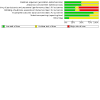

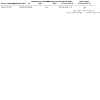
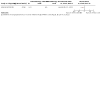


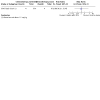
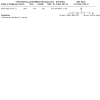

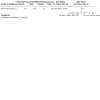
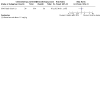

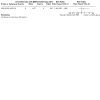
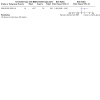
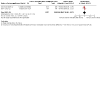
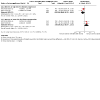





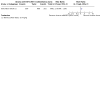

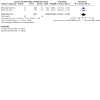
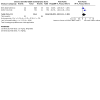
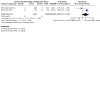


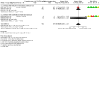
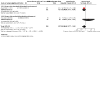
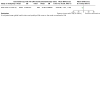
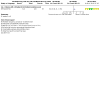
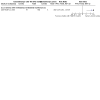





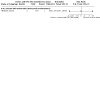




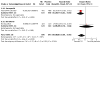

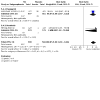
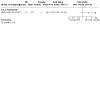


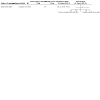

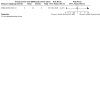
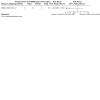
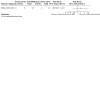
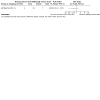
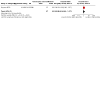



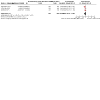

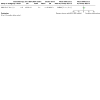

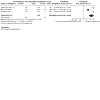
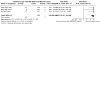
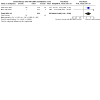

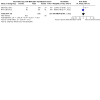

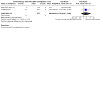




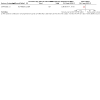

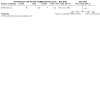
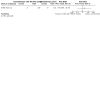


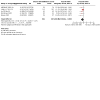


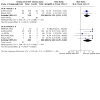
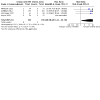


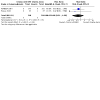
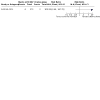

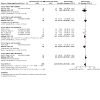

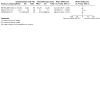
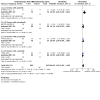
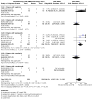



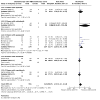
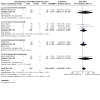
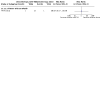

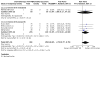
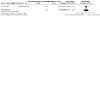



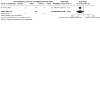
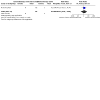

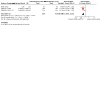
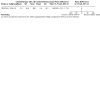
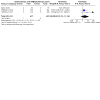
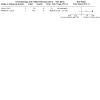
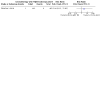

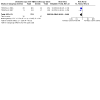
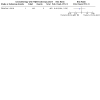

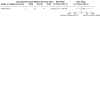
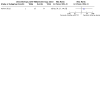

Update of
-
Angiogenesis inhibitors for the treatment of ovarian cancer.Cochrane Database Syst Rev. 2011 Sep 7;(9):CD007930. doi: 10.1002/14651858.CD007930.pub2. Cochrane Database Syst Rev. 2011. Update in: Cochrane Database Syst Rev. 2023 Apr 18;4:CD007930. doi: 10.1002/14651858.CD007930.pub3. PMID: 21901715 Free PMC article. Updated.
References
References to studies included in this review
AGO‐OVAR 12 2020 {published data only}
-
- Du Bois A, Kristensen G, Ray-Coquard I, Reus A, Pignata S, Colombo N, et al. AGO-OVAR 12: A randomized placebo-controlled GCIG/ENGOT-Intergroup phase III trial of standard frontline chemotherapy +/-nintedanib for advanced ovarian cancer. In: International Journal of Gynecological Cancer. Vol. Conference Abstracts of the 18th International Meeting of the European Society of Gynaecological Oncology. 2013:7-8.
-
- Harter P, Kimmig R, De Gregorio N, Reuss A, Pfisterer J, Cibula D, et al. AGO-OVAR 12: a randomized placebo-controlled GCIG/ENGOT-Intergroup phase III trial of standard frontline chemotherapy +/- nintedanib for advanced ovarian cancer. Oncology Research and Treatment 2014;37(Suppl 1):74-5.
-
- Kristensen G, Harter P, Trédan O, Sailer MO, Bamias A, Colombo N, et al. Independent review of AGO-OVAR 12, a GCIG/ENGOT-Intergroup phase III trial of nintedanib (N) in first-line therapy for ovarian cancer (OC). Journal of Clinical Oncology 2014;32(15):5556.
-
- NCT01015118. LUME-Ovar 1: BIBF 1120 or placebo in combination with paclitaxel and carboplatin in first line treatment of ovarian cancer. www.clinicaltrials.gov/ct2/show/NCT01015118 (first posted 18 November 2009).
-
- Ray-Coquard I, Cibula D, Mirza MR, Reuss A, Ricci C, Colombo N, et al, AGO Study Group-led GCIG/ENGOT Intergroup Consortium. Final results from GCIG/ENGOT/AGO-OVAR 12, a randomised placebo-controlled phase III trial of nintedanib combined with chemotherapy for newly diagnosed advanced ovarian cancer. International Journal of Cancer 2020;146:439-48. - PubMed
AGO‐OVAR 16 2019 {published and unpublished data}
-
- Del Campo J M, Kurzeder C, Berton-Rigaud D, Kim B G, Friedlander M, Zamagni C, et al. Progression-free survival by GCIG criteria: analysis of the secondary endpoint of the AGO-OVAR16 trial. In: 18th International Meeting of the European Society of Gynaecological Oncology. 2013.
-
- Du Bois A, Floquet A, Kim JW, Rau J, Del Campo JM, Friedlander M, et al. Randomized, double-blind, phase III trial of pazopanib versus placebo in women who have not progressed after first-line chemotherapy for advanced epithelial ovarian, fallopian tube, or primary peritoneal cancer (AEOC): results of an international Intergroup trial (AGO-OVAR16). Journal of Clinical Oncology, ASCO Annual Meeting Abstracts 2013;31:LBA5503.
-
- Floquet A, Vergote I, Colombo N, Fiane B, Monk B J, Reinthaller A, et al. Progression-free survival by local investigator versus independent central review: comparative analysis of the AGO-OVAR16 trial. In: 18th International Meeting of the European Society of Gynaecological Oncology. 2013. - PubMed
-
- Friedlander M, Knoll S, Meier W, Lesoin A, Kim JW, Poveda A, et al. Quality of life in patients with advanced epithelial ovarian, fallopian tube, or primary peritoneal cancer (AEOC) receiving either pazopanib monotherapy or placebo after first-line chemotherapy: AGO-OVAR16 results. In: European Cancer Congress. 2013.
AMBITION 2022 {published data only}
-
- Kim SI, Joung JG, Park E, Lee JY, Choi CH, Kim S, et al. Clinical and molecular characteristics of AMBITION patients who received olaparib plus cediranib or olaparib plus durvalumab for homologous recombination repair mutated, platinum-resistant ovarian cancer (KGOG 3045) (032). Gynecologic Oncology 2022;166(Suppl 1):S23. [DOI: 10.1016/S0090-8258(22)01250-1] - DOI
-
- Lee J-Y, Kim B-G, Kim J-W, Lee JB, Park E, Kim SH, et al. An umbrella study of biomarker-driven targeted therapy in patients with platinum-resistant recurrent ovarian cancer (KGOG 3045, AMBITION). Journal of Clinical Oncology 2021;39(15 Suppl):5520. - PubMed
-
- Lee JY, Kim BG, Kim JW, Lee JB, Park E, Joung JG, et al, Korean Gynecologic Oncology Group investigators. Biomarker-guided targeted therapy in platinum-resistant ovarian cancer (AMBITION; KGOG 3045): a multicentre, open-label, five-arm, uncontrolled, umbrella trial. Journal of Gynecologic Oncology 2022;33(4):e45. - PMC - PubMed
-
- Lee JY, Yi JY, Kim HS, Lim J, Kim S, Nam BH, et al, KGOG investigators. An umbrella study of biomarker-driven targeted therapy in patients with platinum-resistant recurrent ovarian cancer: a Korean Gynecologic Oncology Group study (KGOG 3045), AMBITION. Japanese Journal of Clinical Oncology 2019;49(8):789-92. - PubMed
-
- NCT03699449. An umbrella study of biomarker-driven targeted therapy In patients with platinum-resistant recurrent ovarian cancer (AMBITION). www.clinicaltrials.gov/ct2/show/NCT03699449 (first posted 09 October 2018).
ANTHALYA 2017 {published data only}
-
- Joly F, Cottu PH, Gouy S, Lambaudie E, Selle F, Leblanc E, et al. Efficacy and long-term safety with bevacizumab included in neoadjuvant and adjuvant therapies in patients with advanced ovarian cancer: Results of the ANTHALYA trial . Journal of Clinical Oncology 2017;35(15 Suppl):5538.
-
- NCT01739218. A study of bevacizumab (Avastin) in neoadjuvant therapy in participants with International Federation of Gynecology and Obstetrics (FIGO) Stage IIIC/IV ovarian, tubal, or peritoneal cancer, initially unresectable (ANTHALYA). www.clinicaltrials.gov/ct2/show/NCT01739218 (first posted 03 December 2012).
-
- Rouzier R, Gouy S, Selle F, Guyon F, Lambaudie E, Fourchotte V, et al. 860PD - Complete resection rate at interval debulking surgery after bevacizumab containing neoadjuvant therapy: primary objective of the ANTHALYA trial. Annals of Oncology 2016;27(6):296-312.
-
- Rouzier R, Gouy S, Selle F, Lambaudie E, Floquet A, Fourchotte V, et al. Efficacy and safety of bevacizumab-containing neoadjuvant therapy followed by interval debulking surgery in advanced ovarian cancer: results from the ANTHALYA trial. European Journal of Cancer 2017;70:133-42. - PubMed
-
- Rouzier R, Gouy S, Selle F, Lambaudie E, Guyon F, Fourchotte V, et al. Complete resection rate at interval debulking surgery after bevacizumab containing neoadjuvant therapy: primary objective of the ANTHALYA trial. International Journal of Gynecological Cancer 2017;26:871.
APPROVE 2022 {published data only}
-
- NCT04348032. Apatinib combined with PLD vs PLD for platinum-resistant recurrent ovarian cancer (APPROVE). www.clinicaltrials.gov/ct2/show/NCT04348032 (first posted 15 April 2020).
-
- Wang T, Li N, Tang J, Yang H, Yin R, Zhang J, et al. Apatinib combined with pegylated liposomal doxorubicin (PLD) versus PLD for platinum-resistant recurrent ovarian cancer (APPROVE): a multicenter, randomized, controlled, open-label, phase II trial. Gynecologic Oncology 2021;162(Suppl 1):S42.
-
- Wang T, Tang J, Yang H, Yin R, Zhang J, Zhou Q, et al. Effect of Apatinib plus pegylated liposomal doxorubicin vs pegylated liposomal doxorubicin alone on platinum-resistant recurrent ovarian cancer: the APPROVE randomized clinical trial. JAMA Oncology 2022;8(8):1169-76. [DOI: 10.1001/jamaoncol.2022.2253] - DOI - PMC - PubMed
AURELIA 2014 {published data only}
-
- Chappell NP, Miller CR, Fielden AD, Barnett JC. Is FDA-approved bevacizumab cost-effective when included in the treatment of platinum-resistant recurrent ovarian cancer? Journal of Oncology Practice 2016;12(7):e775-83. - PubMed
-
- Hilpert F, Fabbro M, Jesus Rubio M, Reuss A, Rosenberg P, Benedetti Panici P, et al. Symptoms and adverse effects with chemotherapy + bevacizumab for platinum-resistant recurrent ovarian cancer: analysis of the phase III AURELIA trial. Gynecologic Oncology 2013;130(1):E3.
-
- Husain A, Wang Y, Hanker LC, Ojeda B, Anttila M, Breda E, et al. Independent radiologic review of AURELIA, a phase 3 trial of bevacizumab plus chemotherapy for platinum-resistant recurrent ovarian cancer. Gynecologic Oncology 2016;142(3):465-70. - PubMed
-
- Kristensen G, Berton-Rigaud D, Hilpert F, Reuss A, Bover I, Raspagliesi F, et al. Effect of bevacizumab (BEV) plus chemotherapy (CT) for platinum-resistant recurrent ovarian cancer (OC) with ascites: analysis of the AURELIA trial. In: International Journal of Gynecological Cancer. 2012:Conference Abstracts: 14th Biennial Meeting of the International Gynecologic Cancer Society.
-
- NCT00976911. AURELIA: A study of Avastin (bevacizumab) added to chemotherapy in patients with platinum-resistant ovarian cancer. www.clinicaltrials.gov/ct2/show/NCT00976911 (first posted 15 September 2009).
AVANOVA2 2019 {published data only}
-
- Mirza MR, Avall Lundqvist E, Birrer MJ, dePont Christensen R, Nyvang GB, Malander S, et al. Niraparib plus bevacizumab versus niraparib alone for platinum-sensitive recurrent ovarian cancer (NSGO-AVANOVA2/ENGOT-ov24): a randomised, phase 2, superiority trial. Lancet Oncology 2019;20(10):1409-19. - PubMed
-
- Mirza MR, Avall-Lundqvist E, Birrer MJ, DePont Christensen R, Nyvang G-B, Malander S, et al. Combination of niraparib and bevacizumab versus niraparib alone as treatment of recurrent platinum-sensitive ovarian cancer: a randomized controlled chemotherapy-free study-NSGO-AVANOVA2/ENGOT-OV24. Journal of Clinical Oncology 2019;37(Suppl 15):5505.
-
- Mirza MR, Mortensen CE, Avall-Lundqvist E, Bjorge L, Berek JS, Herrstedt J, et al. ENGOT-OV24-NSGO/ AVANOVA: niraparib versus bevacizumab-niraparib combination versus bevacizumab and niraparib as sequential therapy in women with platinumsensitive epithelial ovarian, fallopian tube, or peritoneal cancer. Journal of Clinical Oncology 2015;33(15):TPS5607.
-
- Mirza MR, Nyvang G-B, Lund B, DePont Christensen R, Werner TL, Malander S, et al. Final survival analysis of NSGO-AVANOVA2/ ENGOT-OV24: combination of niraparib and bevacizumab versus niraparib alone as treatment of recurrent platinum-sensitive ovarian cancer - a randomized controlled chemotherapy-free study. Journal of Clinical Oncology 2020;38(15 Suppl):6012.
-
- NCT02354131. Niraparib versus niraparib-bevacizumab combination in women with platinum-sensitive epithelial ovarian cancer (AVANOVA). www.clinicaltrials.gov/ct2/show/NCT02354131 (first posted 03 February 2015).
BAROCCO 2022 {published data only}
-
- Colombo N, Nicoletto MO, Benedetti Panici P, Tognon G, Bologna A, Lissoni AA, et al. BAROCCO: a randomized phase II study of weekly paclitaxel vs cediranib-olaparib combination given with continuous or intermittent schedule in patients with recurrent platinum resistant ovarian cancer (PROC). Annals of Oncology 2019;30(Suppl 5):v896.
-
- Colombo N, Nicoletto O, Benedetti Panici P, Tognon G, Lissoni AA, Bologna A, et al. BAROCCO: a randomized phase II study of weekly paclitaxel vs cediranib-olaparib with continuous schedule vs cediranib-olaparib with intermittent schedule in advanced platinum resistant ovarian cancer. Annals of Oncology 2018;29(Suppl 8):viii357. - PubMed
-
- Colombo N, Tomao F, Benedetti Panici P, Nicoletto MO, Tognon G, Bologna A, et al. Randomized phase II trial of weekly paclitaxel vs. cediranib-olaparib (continuous or intermittent schedule) in platinum-resistant high-grade epithelial ovarian cancer. Gynecologic Oncology 2022;164(3):505-13. [DOI: 10.1016/j.ygyno.2022.01.015] - DOI - PubMed
-
- NCT03314740. Best approach in recurrent-ovarian-cancer-with cediranib-olaparib (BAROCCO). www.clinicaltrials.gov/ct2/show/NCT03314740 (first posted 19 October 2017).
CHIVA 2019 {published data only}
-
- Blanc-Durand F, Yaniz-Galende E, Genestie C, De Saint Basile HG, Chardin L, De Rauglaudre G, et al. Immune tumor microenvironnement (iTME) post-neoadjuvant chemotherapy, beyond PD-L1: novel immune targets in ovarian cancer, data from the CHIVA trial, a GINECO/ GINEGEPS study. Journal of Clinical Oncology 2022;40(16 Suppl):5554.
-
- Ferron G, De Rauglaudre G, Chevalier A, et al. Impact of adding nintedanib to neoadjuvant chemotherapy (NACT) for advanced epithelial ovarian cancer (EOC) patients: the CHIVA double-blind randomized phase II GINECO study. Journal of Clinical Oncology 2019;37(15 Suppl):5512.
-
- Ferron G, De Rauglaudre G, Ray-Coquard IL, Lesoin A, Joly F, Lortholary A, et al. The CHIVA study: a GINECO randomized double blind phase II trial of nintedanib versus placebo with the neo-adjuvant chemotherapy (NACT) strategy for patients (pts) with advanced unresectable ovarian cancer (OC). Report of the interval debulking surgery (IDS) safety outcome. Annals of Oncology 2016;27(Suppl 6):V1297.
-
- Lecuru F, Pujade-Lauraine E, Hamizi S, Caumont-Prim A, Raban N, Malaurie E, et al. Surrogate endpoint of progression-free (PFS) and overall survival (OS) for advanced ovarian cancer (AOC) patients (pts) treated with neo-adjuvant chemotherapy (NACT): results of the CHIVA randomized phase II GINECO study. Annals of Oncology 2019;30(Suppl 5):v415.
-
- NCT01583322. Vargatef in addition to first line chemotherapy with interval debulking surgery in patients with ovarian cancer (CHIVA). www.clinicaltrials.gov/ct2/show/NCT01583322 (first posted 24 April 2012).
Cong 2019 {published data only}
-
- Cong J, Liu R, Hou J, Wang X, Jiang H, Wang J. Therapeutic effect of bevacizumab combined with paclitaxel and carboplatin on recurrent ovarian cancer. Journal of the Balkan Union of Oncology (JBUON) 2019;24(3):1003-8. - PubMed
Duska 2020 {published data only}
-
- Duska LR, Brown J, Jelovac D, Moore KN, McGuire WP, Darus C, et al. A randomized phase II evaluation of weekly gemcitabine plus pazopanib versus weekly gemictabine alone in the treatment of persistent or recurrent epithelial ovarian, fallopian tube or primary peritoneal carcinoma. Journal of Clinical Oncology 2017;35 (15 Suppl):5532. - PubMed
-
- Duska LR, Petroni GR, Varhegyi N, Brown J, Jelovac D, Moore KN, et al. A randomized phase II evaluation of weekly gemcitabine plus pazopanib versus weekly gemcitabine alone in the treatment of persistent or recurrent epithelial ovarian, fallopian tube or primary peritoneal carcinoma. Gynecologic Oncology 2020;157(3):585-92. - PubMed
-
- NCT01610206. A randomized open label phase II study of weekly gemcitabine plus pazopanib versus weekly gemcitabine alone in the treatment of patients with persistent or relapsed epithelial ovarian, fallopian tube or primary peritoneal carcinoma. www.clinicaltrials.gov/ct2/show/NCT01610206 (first posted 01 June 2012).
EORTC‐1508 2021 {published data only}2015‐004601‐17
-
- Banerjee S, Ottevanger P, Sarivalasis A, Le Scodan R, Montes A, Kroep JR, et al. LBA32 Principal results of the EORTC-1508 trial: a phase II randomised, multicentre study of bevacizumab vs atezolizumab and bevacizumab with acetylsalicylic acid or placebo in recurrent platinum-resistant ovarian, fallopian tube or primary peritoneal adenocarcinoma. Annals of Oncology 2021;32:S1308.
-
- NCT02659384. Anti-programmed cell death-1 ligand 1 (aPDL-1) antibody atezolizumab, bevacizumab and acetylsalicylic acid in recurrent platinum resistant ovarian cancer. www.clinicaltrials.gov/ct2/show/NCT02659384 (first posted 20 January 2016).
GEICO‐1205 2019 {published data only}
-
- Garcia Garcia Y, De Juan A, Mendiola C, Barretina-Ginesta P, Vidal L, Santaballa A, et al. Phase II randomized trial of neoadjuvant (NA) chemotherapy (CT) with or without bevacizumab (Bev) in advanced epithelial ovarian cancer (EOC) (GEICO 1205/NOVA TRIAL). Journal of Clinical Oncology 2017;35:5508.
-
- Garcia Garcia Y, Juan Ferre A, Mendiola C, Barretina-Ginesta MP, Gaba Garcia L, Santaballa Bertran A, et al. Efficacy and safety results from GEICO 1205, a randomized phase II trial of neoadjuvant chemotherapy with or without bevacizumab for advanced epithelial ovarian cancer. International Journal of Gynecological Cancer 2019;29(6):1050-6. - PubMed
-
- NCT01847677. Neoadjuvant therapy in advanced ovarian cancer with Avastin (NOVA). www.clinicaltrials.gov/ct2/show/NCT01847677 (first posted 07 May 2013).
GOG‐0213 2017 {published data only}
-
- Coleman R L, Brady M F, Herzog T J, Sabbatini P, Armstrong D K, Walker J L, et al. A phase III randomized controlled clinical trial of carboplatin and paclitaxel alone or in combination with bevacizumab followed by bevacizumab and secondary cytoreductive surgery in platinum sensitive, recurrent ovarian, peritoneal primary and fallopian tube cancer (Gynecologic Oncology Group 0213). Gynecologic Oncology 2015;137(Suppl 1):3-4.
-
- Coleman RL, Brady MF, Herzog TJ, Sabbatini P, Armstrong DK, Walker JL, et al. Bevacizumab and paclitaxel-carboplatin chemotherapy and secondary cytoreduction in recurrent, platinum-sensitive ovarian cancer (NRG Oncology/Gynecologic Oncology Group study GOG-0213): a multicentre, open-label, randomised, phase 3 trial. Lancet Oncology 2017;18(6):779-91. - PMC - PubMed
-
- NCT00565851. Carboplatin, paclitaxel and gemcitabine hydrochloride with or without bevacizumab after surgery in treating patients with recurrent ovarian epithelial, primary peritoneal, or fallopian tube cancer. www.clinicaltrials.gov/ct2/show/study/NCT00565851 (first posted 30 November 2007).
GOG‐0218 2019 {published and unpublished data}
-
- Birrer MJ, Lankes H, Burger RA, Mannel R, Homesley H, Henschel V, et al. Biomarker (BM) results from GOG-0218, a phase 3 trial of front-line bevacizumab (BV) + chemotherapy (CT) for ovarian cancer (OC). Annals of Oncology 2012;23(9 Suppl):IX81-2.
-
- Burger R, Brady M, Bookman M, Monk B, Walker J, Homesley H, et al. Prospective investigation of risk factors for gastrointestinal adverse events in a phase III randomized trial of bevacizumab in first-line therapy of advanced epithelial ovarian cancer, primary peritoneal cancer or fallopian tube cancer: a Gynecologic Oncology Group study. Gynecologic Oncology 2011;120:S5 Abstract 7.
-
- Burger RA, Brady MF, Bookman MA, Fleming GF, Monk BJ, Huang H, et al. Incorporation of bevacizumab in the primary treatment of ovarian cancer. New England Journal of Medicine 2011;365:2473-83. - PubMed
-
- Burger RA, Brady MF, Bookman MA, Monk BJ, Walker J, Homesley H, et al, Gynaecologic Oncology Group study. Safety and subgroup efficacy analyses in GOG218, a phase III trial of bevacizumab (BEV) in the primary treatment of advanced epithelial ovarian cancer (EOC), primary peritoneal cancer (PPC) or fallopian tube cancer (FTC). Annals of Oncology 2010;21(Suppl):Abstr 978PD viii307.
-
- Burger RA, Brady MF, Bookman MA, Walker JL, Homesley HD, Fowler J, et al, Gynecologic Oncology Group study. Phase III trial of bevacizumab (BEV) in the primary treatment of advanced epithelial ovarian cancer (EOC), primary peritoneal cancer (PPC), or fallopian tube cancer (FTC). Journal of Clinical Oncology 2010;28(Suppl):Abstr LBA1.
GOG‐0241 2019 {published data only}ISRCTN83438782
-
- Gore M, Hackshaw A, Brady WE, Penson RT, Zaino R, McCluggage WG, et al. An international, phase III randomized trial in patients with mucinous epithelial ovarian cancer (mEOC/GOG 0241) with long-term follow-up: and experience of conducting a clinical trial in a rare gynecological tumor. Gynecologic Oncology 2019;153(3):541-8. - PMC - PubMed
-
- Gore ME, Hackshaw A, Brady WE, Penson RT, Zaino RJ, McCluggage WG, et al. Multicentre trial of carboplatin/paclitaxel versus oxaliplatin/capecitabine, each with/without bevacizumab, as first line chemotherapy for patients with mucinous epithelial ovarian cancer (mEOC). Journal of Clinical Oncology 2015;33(15 Suppl 1):5528.
-
- NCT01081262. Carboplatin and paclitaxel or oxaliplatin and capecitabine with or without bevacizumab as first-line therapy in treating patients with newly diagnosed stage II-IV or recurrent stage I epithelial ovarian or fallopian tube cancer. www.clinicaltrials.gov/ct2/show/NCT01081262 (first posted 05 March 2019).
Gotlieb 2012 {published data only}2005‐005026‐31;
-
- Gotlieb W H, Amant F, Advani S, Goswami C, Hirte H, Provencher D, et al. Intravenous aflibercept for treatment of recurrent symptomatic malignant ascites in patients with advanced ovarian cancer: a phase 2, randomised, double-blind, placebo-controlled study. Lancet Oncology 2012;13:154-62. - PubMed
-
- NCT00327444. Study of the effect of intravenous AVE0005 (VEGF Trap) in advanced ovarian cancer patients with recurrent symptomatic malignant ascites. www.clinicaltrials.gov/ct2/show/study/NCT00327444 (first posted 18 May 2006).
-
- Vergote I, Amant F, Advani F, Goswami C, Hirte H, Provencher D et al. Intravenous aflibercept (VEGF Trap) for the treatment of recurrent symptomatic malignant ascites. Personal communication (Abstract to subsequent full published version of the study, received from authors prior to original version of the review).
-
- Vergote I, Amant F, Advani F, Goswani C, Hirte H, Provencher D, et al. Aflibercept (VEGF Trap) in advanced ovarian cancer patients with recurrent symptomatic malignant ascites: results of a randomized, double-blind, placebo-controlled study. In: 16th International Meeting of the European Society of Gynaecological Oncology; 2009 Oct 11-14; Belgrade, Serbia. 2009:Abstract 1428.
-
- Vergote I, Amant F, Advani F, Goswani C, Hirte H, Provencher D, et al. Aflibercept (VEGF Trap) in advanced ovarian cancer patients with recurrent symptomatic malignant ascites: results of a randomized, double-blind, placebo-controlled study. International Journal of Gynecological Cancer 2009;19:Suppl 2.
Gupta 2019 {published data only}NCI‐2009‐01597CDR0000567043
-
- Gupta R, Cristea M, Frankel P, Ruel C, Chen C, Wang Y, et al. Randomized trial of oral cyclophosphamide versus oral cyclophosphamide with celecoxib for recurrent epithelial ovarian, fallopian tube, and primary peritoneal cancer. Cancer Treatment and Research Communications 2019;21:100155. - PMC - PubMed
-
- NCT00538031. Trial protocol: cyclophosphamide with or without celecoxib in treating patients with recurrent or persistent ovarian epithelial, fallopian tube, or primary peritoneal cancer. www.clinicaltrials.gov/ct2/show/NCT00538031 (first posted 02 October 2007).
Hainsworth 2015 {published data only}
-
- Hainsworth J D, Thompson D S, Bismayer J A, Gian V G, Merritt W M, Whorf R C, et al. Paclitaxel/carboplatin with or without sorafenib in the first-line treatment of patients with stage III/IV epithelial ovarian cancer: a randomized phase II study of the Sarah Cannon Research Institute. Cancer Medicine 2015;4(5):673-81. - PMC - PubMed
-
- Hainsworth JD, Numnum TM, Rao GG. A randomized phase II study of paclitaxel/carboplatin with or without sorafenib in the first-line treatment of patients with stage III/IV epithelial ovarian cancer. Journal of Clinical Oncology 2010;28(Suppl 15):TPS257.
-
- NCT00390611. Paclitaxel and carboplatin with or without sorafenib in the first-line treatment of patients with ovarian cancer. www.clinicaltrials.gov/ct2/show/NCT00390611 (first posted 19 October 2006).
-
- Thompson DS, Dudley BS, Bismayer JA, Gian VG, Merritt WM, Whorf RC, et al. Paclitaxel/carboplatin with or without sorafenib in the first-line treatment of patients with stage III/IV epithelial ovarian cancer: A randomized phase II study of the Sarah Cannon Research Institute. Journal of Clinical Oncology 2013;31(15 Suppl):5513. - PMC - PubMed
Herzog 2013 {published data only}
-
- Herzog TJ, Scambia G, Kim BG, Lhomme C, Markowska J, Ray-Coquard I, et al. A randomized, double-blind phase 2 trial of maintenance sorafenib in epithelial ovarian or primary peritoneal cancer. International Journal of Gynecological Cancer 2012;22(Suppl 3):E99-100.
-
- Herzog TJ, Scambia G, Kim BG, Lhommé C, Markowska J, Ray-Coquard I, et al. A randomized phase II trial of maintenance therapy with Sorafenib in front-line ovarian carcinoma. Gynecologic Oncology 2013;130(1):25-30. - PubMed
-
- NCT00791778. Comparison of nexavar/placebo as maintenance therapy for patients with advanced ovarian or primary peritoneal cancer. www.clinicaltrials.gov/ct2/show/NCT00791778 (first posted 14 November 2008).
ICON6 2021 {published data only (unpublished sought but not used)}ISRCTN68510403
-
- Ledermann JA, Embleton AC, Raja F, Perren TJ, Jayson GC, Rustin GJ, et al. Cediranib in patients with relapsed platinum-sensitive ovarian cancer (ICON6): a randomised, double-blind, placebo-controlled phase 3 trial. Lancet 2016;387(10023):1066-74. - PubMed
-
- Ledermann JA, Perren T, Raja F A, Perren T J, Embleton A, Rustin GJS, et al. Randomised double-blind phase iii trial of cediranib (AZD 2171) in relapsed platinum sensitive ovarian cancer: Results of the ICON6 trial. NCRI Cancer Conference (www.abstracts.ncri.org.uk/abstract/) 2013.
-
- Ledermann JA, Perren TJ, Raja FA, Embleton A, Rustin GJ, Jayson G, et al. LBA10: Randomised double-blind phase III trial of cediranib (AZD 2171) in relapsed platinum sensitive ovarian cancer: results of the ICON6 trial. European Journal of Cancer 2013;49(Suppl 3):S5-6.
-
- NCT00532194. A randomised, placebo-controlled, trial of concurrent cediranib [AZD2171] (with platinum-based chemotherapy) and concurrent and maintenance cediranib in women with platinum-sensitive relapsed ovarian cancer. www.clinicaltrials.gov/ct2/show/NCT00532194 (first posted 20 September 2007).
ICON7 2015 {published and unpublished data}ISRCTN91273375
-
- Gonzalez-Martin A, Oza AM, Embleton AC, Pfisterer J, Ledermann JA, Pujade-Lauraine E, et al. Exploratory outcome analyses according to stage and residual disease in the ICON7 trial of frontline carboplatin/paclitaxel (CP) +/- bevacizumab (BEV) for ovarian cancer (OC). Journal of Clinical Oncology 2015;33(Suppl 15):5548. - PMC - PubMed
-
- Hinde S, Epstein D, Cook A, Embleton A, Perren T, Sculpher M. The Cost-effectiveness of bevacizumab in advanced ovarian cancer using evidence from the ICON7 Trial. Value Health 2016;19(4):431-9. - PubMed
-
- ICON7 - a randomised two-arm, multi-centre Gynaecologic Cancer InterGroup trial of adding bevacizumab to standard chemotherapy (carboplatin and paclitaxel) in patients with epithelial ovarian cancer [abstract]. Proceedings of the Annual Meeting of the British Gynaecological Cancer Society, Manchester, UK 2006 Nov;1:92.
-
- ISRCTN91273375. ICON7 - a randomised, two-arm, multi-centre Gynaecologic Cancer InterGroup trial of adding bevacizumab to standard chemotherapy (carboplatin and paclitaxel) in patients with epithelial ovarian cancer. www.isrctn.com/ISRCTN91273375 (first registered 25 January 2006).
Karlan 2012 {published and unpublished data}
-
- Karlan B, Lu J, Navale L, Rasmussen E, Sun YN, Vergote IB, et al. Exposure-response relationship of open-label (OL) AMG 386 monotherapy in patients (pts) with recurrent ovarian cancer. Journal of Clinical Oncology 2012;30(15 Suppl):5072.
-
- Karlan BY, Oza AM, Hansen VL, Richardson GE, Provencher DM, Ghatage P et al. Randomized, double-blind, placebo-controlled phase II study of AMG 386 combined with weekly paclitaxel in patients (pts) with recurrent ovarian carcinoma. Journal of Clinical Oncology 2010;28(Suppl 15):5000. - PubMed
-
- Karlan BY, Oza AM, Richardson GE, Provencher DM, Hansen VL, Buck M, et al. Randomized, double-blind, placebo-controlled phase II study of AMG 386 combined with weekly paclitaxel in patients with recurrent ovarian cancer. Journal of Clinical Oncology 2012;30(4):362-71. - PubMed
-
- Lu J, Rasmussen E, Navale L, Kuchimanchi M, Hurh E, Karlan BY, et al. Exposure-response relationships of AMG 386 in combination with weekly paclitaxel in advanced ovarian cancer: Population pharmacokinetic/pharmacodynamic (PK/PD) modelling to facilitate phase III dose selection. Journal of Clinical Oncology 2010;28(15 Suppl):5042.
-
- Lu J, Rasmussen E, Navale L, Kuchimanchi M, Hurh E, Karlan BY, et al. Exposure-response relationships of AMG 386 in combination with weekly paclitaxel in advanced ovarian cancer: facilitation of phase 3 dose selection by population pharmacokinetic/pharmacodynamic modelling. Annals of Oncology 2010;21(Suppl 8):viii308.
Ledermann 2011 {published data only (unpublished sought but not used)}
-
- Ledermann JA, Hackshaw A, Kaye S, Jayson G, Gabra H, McNeish I, et al. Randomized phase II placebo-controlled trial of maintenance therapy using the oral triple angiokinase inhibitor BIBF 1120 after chemotherapy for relapsed ovarian cancer. Journal of Clinical Oncology 2011;29(28):3798-804. - PubMed
-
- Ledermann JA, Rustin GJ, Hackshaw A, Kaye SB, Jayson G, Gabra H et al. A randomized phase II placebo-controlled trial using maintenance therapy to evaluate the vascular targeting agent BIBF 1120 following treatment of relapsed ovarian cancer (OC). Journal of Clinical Oncology 2009;2(Suppl 15):5501.
-
- NCT00710762. A randomized placebo-controlled Phase II study of continuous maintenance treatment with BIBF 1120 following chemotherapy in patients with relapsed ovarian cancer. clinicaltrials.gov/ct2/show/NCT00710762 (first posted 04 July 2008).
Li 2019 {published data only}
-
- Li C, Cheng W, Yu S, Xuan J. Study on the short‐term efficacy and safety of bevacizumab combined with chemotherapy for platinum‐sensitive recurrent ovarian cancer. Basic & Clinical Pharmacology & Toxicology 2019;125:3-224.
Li 2021 {published data only}
-
- Li XL, Zhao JD, Ma JQ. Efficacy of bevacizumab combined with albumin binding paclitaxel in patients with platinum-resistant relapsed and metastatic ovarian cancer and effect on immune function. Chinese Journal of Pharmaceutical Biotechnology 2021;28(5):491-5. [DOI: 10.19526/j.cnki.1005-8915.20210511] - DOI
Liu 2019a {published data only}
-
- Liu B, An R, Yu J. Efficacy of bevacizumab combined with albumin-bound paclitaxel in the treatment of platinum-resistant recurrent ovarian cancer. Journal of B.U.ON. 2019;24(6):2303-9. - PubMed
Liu 2019b {published data only}
-
- Liu J, Barry WT, Birrer MJ. A randomized phase 2 trial comparing efficacy of the combination of the PARP inhibitor olaparib and the antiangiogenic cediranib against olaparib alone in recurrent platinum-sensitive ovarian cancer. Journal of Clinical Oncology 2014;32(18):LBA5500.
-
- Liu JF, Barry WT, Birrer M, Lee J-M, Buckanovich RJ, Fleming GF, et al. Overall survival and updated progression-free survival outcomes in a randomized phase II study of combination cediranib and olaparib versus olaparib in relapsed platinum-sensitive ovarian cancer. Annals of Oncology 2019;30(4):551-7. - PMC - PubMed
-
- Liu JF, Barry WT, Birrer MJ, Lee J-M, Buckanovich RJ, Fleming GF, et al. Overall survival and updated progression-free survival results from a randomized phase 2 trial comparing the combination of olaparib and cediranib against olaparib alone in recurrent platinum-sensitive ovarian cancer. Journal of Clinical Oncology 2017;35(15 Suppl 1):5535.
-
- NCT01116648. Cediranib maleate and olaparib in treating patients with recurrent ovarian epithelial cancer, fallopian tube cancer, peritoneal cancer, or recurrent triple-negative breast cancer. www.clinicaltrials.gov/ct2/show/NCT01116648 (first posted 05 May 2010).
Liu 2021a {published data only}
-
- Liu M, Lu D, Gao S, Xu X, Zhang Y. Evaluation of the short-term efficacy and safety of bevacizumab combined with doxorubicin liposomes in the treatment of patients with platinum-resistant recurrent epithelial ovarian cancer. Chinese Journal of Cancer Biotherapy 2021;28(8):818-23.
Liu 2022 {published data only}
-
- Liu JF, Brady MF, Matulonis UA, Miller A, Kohn EC, Swisher EM, et al. A phase III study comparing single-agent olaparib or the combination of cediranib and olaparib to standard platinumbased chemotherapy in recurrent platinum-sensitive ovarian cancer. Journal of Clinical Oncology 2020;38(15 suppl):6003.
-
- Liu JF, Brady MF, Matulonis UA, Miller A, Kohn EC, Swisher EM, et al. Olaparib with or without cediranib versus platinum-based chemotherapy in recurrent platinum-sensitive ovarian cancer (NRG-GY004): a randomized, open-label, phase III trial. Journal of Clinical Oncology 2022;40(19):2138-47. - PMC - PubMed
-
- NCT02446600. Testing the use of a single drug (olaparib) or the combination of two drugs (cediranib and olaparib) compared to the usual chemotherapy for women with platinum sensitive ovarian, fallopian tube, or primary peritoneal cancer. www.clinicaltrials.gov/ct2/show/NCT02446600 (first posted: 2021).
-
- Swisher E, Miller A, Kohn E, Brady M, Radke M, Pennil C, et al. Association of homologous recombination deficiency (HRD) with clinical outcomes in a phase III study of olaparib or cediranib and olaparib compared to platinum-based chemotherapy in recurrent platinum-sensitive ovarian cancer (PSOC): Biomarker analyses from NRG-GY004. Annals of Oncology 2021;32(Suppl 5):S1309.
Matulonis 2019 {published data only}
-
- Matulonis UA, Sill MW, Makker V, Mutch DG, Carlson JW, Darus CJ, et al. A randomized phase II study of cabozantinib versus weekly paclitaxel in the treatment of persistent or recurrent epithelial ovarian, fallopian tube or primary peritoneal cancer: an NRG Oncology/Gynecologic Oncology Group study. Gynecolic Oncololgy 2019;152(3):548-53. - PMC - PubMed
-
- NCT01716715. Cabozantinib or paclitaxel in treating patients with persistent or recurrent epithelial ovarian, fallopian tube, or primary peritoneal cavity cancer. www.clinicaltrials.gov/ct2/show/NCT01716715 (first posted 30 October 2012).
McGuire 2018 {published data only}
-
- McGuire WP, Penson RT, Gore M, Casado Herraez A, Peterson P, Shahir A, Ilaria R Jr. Randomized phase II study of the PDGFRα antibody olaratumab plus liposomal doxorubicin versus liposomal doxorubicin alone in patients with platinum-refractory or platinum-resistant advanced ovarian cancer. BMC Cancer 2018;18:1292. - PMC - PubMed
-
- McGuire WP, Shah GD, Loizos N, Youssoufian H, Rowinsky EK, Gore ME. Randomized phase II trial of pegylated liposomal doxorubicin (PLD) with or without anti-platelet-derived growth factor receptor-alpha (PDGFR-alpha) monoclonal antibody IMC-3G3 in platinum-refractory/resistant advanced ovarian cancer. Journal of Clinical Oncology 2010;28(15 Suppl):TPS256.
-
- NCT00913835. A study of Liposomal Doxorubicin with or without IMC-3G3 in platinum-refractory or resistant advanced ovarian cancer. www.clinicaltrials.gov/ct2/show/NCT00913835 (first posted 04 June 2009).
METRO‐BIBF 2020 {published data only}
-
- Hall M, Lillywhite R, Nicum S, Lord R, Glasspool R, Feeney M, et al. METRO-BIBF Phase II, randomised, placebo controlled, multicentre, feasibility study of low dose (metronomic) cyclophosphamide (MCy) with and without nintedanib in advanced ovarian cancer (AOC). Annals of Oncology 2016;27:vi296-312.
-
- Hall MR, Dehbi HM, Banerjee S, Lord R, Clamp A, Ledermann JA, et al. A phase II randomised, placebo-controlled trial of low dose (metronomic) cyclophosphamide and nintedanib (BIBF1120) in advanced ovarian, fallopian tube or primary peritoneal cancer. Gynecologic Oncology 2020;159(3):692-8. - PubMed
-
- NCT01610869. Low dose cyclophosphamide +/-- nintedanib in advanced ovarian cancer (METRO-BIBF). www.clinicaltrials.gov/ct2/show/NCT01610869 (first posted 04 June 2012).
MITO‐11 2015 {published data only}
-
- NCT01644825. Weekly paclitaxel with or without pazopanib in platinum resistant or refractory ovarian cancer (MITO-11). www.clinicaltrials.gov/ct2/show/NCT01644825) (first posted 19 July 2012).
-
- Pignata S, Lorusso D, Scambia G, Sambataro D, Tamberi S, Cinieri S, et al. Pazopanib plus weekly paclitaxel versus weekly paclitaxel alone for platinum-resistant or platinum-refractory advanced ovarian cancer (MITO 11): a randomised, open-label, phase 2 trial. Lancet Oncology 2015;16(5):561-8. - PubMed
-
- Pignata S, Lorusso D, Scambia G. MITO-11: A randomized multicenter phase II trial testing the addition of pazopanib to weekly paclitaxel in platinum-resistant or -refractory advanced ovarian cancer (AOC). Journal of Clinical Oncology 2014;32:Abstract 5503.
MITO‐16b 2021 {published data only}2012‐004362‐17
-
- NCT01802749. Bevacizumab beyond progression in platinum sensitive ovarian cancer (MITO16MANGO2b). www.clinicaltrials.gov/ct2/show/NCT01802749 (first posted 01 March 2013).
-
- Pignata S, Lorusso D, Joly F, Gallo C, Colombo N, Sessa C, et al. Carboplatin-based doublet plus bevacizumab beyond progression versus carboplatin-based doublet alone in patients with platinum-sensitive ovarian cancer: a randomised, phase 3 trial. Lancet Oncology 2021;22(2):267-76. - PubMed
NICCC 2020 {published data only}2013‐002109‐73ISRCTN50772895
-
- Glasspool R, McNeish I, Westermann A, Hinsley S, Ledermann J, Ray-Coquard I, et al. A randomised phase II study of nintedanib (BIBF1120) compared to chemotherapy in patients with recurrent clear cell carcinoma of the ovary or endometrium (NICCC/ENGOT-OV36). International Journal of Gynecological Cancer 2020;30:A127-8.
-
- NCT02866370. Study of nintedanib compared to chemotherapy in patients with recurrent clear cell carcinoma of the ovary or Eedometrium (NiCCC). www.clinicaltrials.gov/ct2/show/NCT02866370 (first posted 15 August 2015).
Nishikawa 2020 {published data only}
-
- Nishikawa N, Shoji T, Enomoto T, Abe M, Okamoto A, Saito T, et al. Phase II trial evaluating efficacy and safety of standard of care with or without bevacizumab in platinum-resistant epithelial ovarian, fallopian tube, or primary peritoneal cancer. International Journal of Gynecological Cancer 2020;30(Suppl 3):A10-A11.
-
- Shoji T, Enomoto T, Abe M, Okamoto A, Nagasawa T, Oishi T, et al. Efficacy and safety of standard of care with/without bevacizumab for platinum-resistant ovarian/fallopian tube/peritoneal cancer previously treated with bevacizumab: the Japanese Gynecologic Oncology Group study JGOG3023. Cancer Science 2022;113(1):240-50. [DOI: 10.1111/cas.15185] - DOI - PMC - PubMed
OCEANS 2015 {published data only}
-
- Aghajanian C, Blank S, Goff B, Judson P, Nycum L, Sovak M, et al. Results from a 2nd interim os analysis in oceans: a randomized phase 3 trial of gemcitabine (G), carboplatin (C) and bevacizumab (BV) followed by BV to disease progression in patients with platinum-sensitive recurrent epithelial ovarian (OC), primary peritoneal (PPC), or fallopian tube cancer (FTC). Gynecologic Oncology 2012;125(3):773.
-
- Aghajanian C, Blank SV, Goff B, Judson PL, Makhija S, Sharma SK, et al. Efficacy in patient subgroups in OCEANS, a randomized, doubleblinded, placebo-controlled, phase 3 trial of chemotherapy +/- bevacizumab in patients with platinum-sensitive recurrent epithelial ovarian (OC), primary peritoneal (PPC), or fallopian tube cancer (FTC). European Journal of Cancer 2011;47:5.
-
- Aghajanian C, Blank SV, Goff BA, Judson PL, Nycum LR, Sovak MA, et al. An updated safety analysis of OCEANS, a randomized, double-blind, phase III trial of gemcitabine (G) and carboplatin (C) with bevacizumab (BV) or placebo (PL) followed by BV or PL to disease progression (PD) in patients with platinum-sensitive (Plat-S) recurrent ovarian cancer. Journal of Clinical Oncology 2012;30:5054. - PMC - PubMed
-
- Aghajanian C, Blank SV, Goff BA, Judson PL, Teneriello MG, Husain A, et al. OCEANS: a randomized, double-blind, placebo-controlled phase III trial of chemotherapy with or without bevacizumab in patients with platinum-sensitive recurrent epithelial ovarian, primary peritoneal, or fallopian tube cancer. Journal of Clinical Oncology 2012;30:2039-45. - PMC - PubMed
-
- Aghajanian C, Finkler N, Rutherford T, Smith D, Yi J, Parmar H, Nycum R, Sovak MA, et al. Oceans: A randomized, Double-blinded, Placebo-controlled, Phase III trial of chemotherapy+/- bevacizumab (BEV) in platinum-sensitive recurrent epithelial ovarian cancers (EOC), primary peritoneal (PPC), or fallopian tube cancer (FTC). International Journal of Gynecological Cancer 2011;21:S11.
OCTOVA 2021 {published data only}ISRCTN14784018
-
- NCT03117933. Olaparib +/- cediranib or chemotherapy in patients with platinum-resistant ovarian cancer (OCTOVA). www.clinicaltrials.gov/ct2/show/NCT03117933 (first posted 18 April 2017).
-
- Nicum S, Holmes J, McGregor N, Dunn R, Collins L, Kaye S, et al. Randomised phase II trial of olaparib compared to weekly paclitaxel or olaparib plus cediranib in patients with platinum-resistant ovarian cancer (OCTOVA). Annals of Oncology 2021;32(Suppl 5):S725-6.
Reyners 2012 {published data only}ISRCTN30851756
-
- ISRCTN30851756. A randomized phase II study investigating the addition of the specific cox-2 inhibitor celecoxib to docetaxel plus carboplatin as first-line chemotherapy for stage IC-IV epithelial ovarian fallopian tube or primary peritoneal carcinomas. www.isrctn.com/ISRCTN30851756 (first registered 27 January 2006). [DOI: ] - PubMed
-
- Reyners AK, Munck L, Erdkamp FL, Smit WM, Hoekman K, Lalisang RI, et al, DoCaCel Study Group. A randomized phase II study investigating the addition of the specific COX-2 inhibitor celecoxib to docetaxel plus carboplatin as first-line chemotherapy for stage IC to IV epithelial ovarian cancer, fallopian tube or primary peritoneal carcinomas: the DoCaCel study. Annals of Oncology 2012;23(11):2896-902. [DOI: 10.1093/annonc/mds107] [PMID: PMID: 22689176] - DOI - PubMed
Richardson 2018 {published data only}
-
- NCT01468909. Paclitaxel with or without pazopanib hydrochloride in treating patients with persistent or recurrent ovarian epithelial, fallopian tube, or peritoneal cavity cancer. www.clinicaltrials.gov/ct2/show/NCT01468909 (first posted 10 November 2011).
-
- Richardson DL, Sill MW, Cho JK, Pearl ML, Kehoe SM, Hanjani P, et al. A randomized placebo controlled phase IIB trial of weekly paclitaxel plus/minus pazopanib in persistent or recurrent ovarian cancer. International Journal of Gynecological Cancer 2014;24(9):17.
Roque 2022 {published data only}
-
- NCT03093155. Evaluation of weekly ixabepilone with or without biweekly bevacizumab. www.clinicaltrials.gov/ct2/show/NCT03093155 (first posted 28 March 2017).
-
- Roque D, Siegel E, Buza N, Bellone S, Silasi D-A, Huang G, et al. Randomized phase II trial of weekly ixabepilone with or without biweekly bevacizumab for platinum-resistant or refractory ovarian/fallopian tube/primary peritoneal cancer. Gynecologic Oncology 2021;162(Suppl 1):S58.
-
- Roque DM, Siegel ER, Buza N, Bellone S, Silasi DA, Huang GS, et al. Randomised phase II trial of weekly ixabepilone ± biweekly bevacizumab for platinum-resistant or refractory ovarian/fallopian tube/primary peritoneal cancer. British Journal of Cancer 2022;126(12):1695-1703. [DOI: 10.1038/s41416-022-01717-6] - DOI - PMC - PubMed
Sharma 2021 {published data only}CTRI/2017/10/010219
-
- Sharma A, Khurana S, Malik PS, Singh M, Mathur S, Kumar S, et al. Quality of life, vascular endothelial growth factor inhibition, and survival outcomes with combination oral metronomic therapy in platinum refractory epithelial ovarian carcinoma: results from a randomized study. Journal of Clinical Oncology 2020;38(15 Suppl):6048.
-
- Sharma A, Singh M, Chauhan R, Malik PS, Khurana S, Mathur S, et al. Pazopanib based oral metronomic therapy for platinum resistant/refractory epithelial ovarian cancer: a phase II, open label, randomized, controlled trial. Gynecologic Oncology 2021;162:382-8. - PubMed
SWOG‐S0904 2014 {published data only}
-
- Coleman RL, Moon J, Sood A, Branham D, Delmore JE, Bonebrake AJ, et al. Randomized phase II study of docetaxel plus vandetanib (D+V) versus docetaxel followed by vandetanib (D-V) in patients with persistent or recurrent epithelial ovarian, fallopian tube, or primary peritoneal carcinoma (OC): SWOG S0904. Journal of Clinical Oncology 2012;30(15 Suppl):5015.
-
- Coleman RL, Moon J, Sood AK, Hu W, Delmore JE, Bonebrake AJ, et al. Randomised phase II study of docetaxel plus vandetanib versus docetaxel followed by vandetanib in patients with persistent or recurrent epithelial ovarian, fallopian tube or primary peritoneal carcinoma: SWOG S0904. European Journal of Cancer 2014;50(9):1638-48. - PMC - PubMed
-
- NCT00872989. Docetaxel with or without vandetanib in treating patients with persistent or recurrent ovarian epithelial cancer, fallopian tube cancer, or primary peritoneal cancer. www.clinicaltrials.gov/ct2/show/NCT00872989 (first posted 01 April 2016).
TAPAZ 2022 {published data only}
-
- Joly F, Fabbro M, Berton D, Lequesne J, Anota A, Puszkiel A, et al. Paclitaxel with or without pazopanib for ovarian cancer relapsing during bevacizumab maintenance therapy: the GINECO randomized phase II TAPAZ study. Gynecology Oncology 2022 ;166(3):389-96. [DOI: 10.1016/j.ygyno.2022.06.022] - DOI - PubMed
-
- Joly Lobbedez F, Fabbro M, Berton D, Lequesne J, Anota A, Puszkiel A, et al. Paclitaxel with or without pazopanib in ovarian cancer patients with relapse during bevacizumab maintenance therapy: the GINECO randomized phase II TAPAZ study. Annals of Oncology 2020;31(Suppl 4):S611-S2. - PubMed
-
- NCT02383251. Paclitaxel/pazopanib for platinum resistant/refractory ovarian cancer (TAPAZ). www.clinicaltrials.gov/ct2/show/NCT02383251 (first posted 09 March 2015).
TRIAS 2018 {published data only}
-
- Chekerov R, Hilpert F, Mahner S, El-Balat A, Harter P, De Gregorio N, et al. Sorafenib plus topotecan versus placebo plus topotecan for platinum-resistant ovarian cancer (TRIAS): a multicentre, randomised, double-blind, placebo-controlled, phase 2 trial. Lancet Oncology 2018;19(9):1247-58. - PubMed
-
- Khalfaoui K, Mahner S, Richter R, Hilpert F, Lorenz R, Harter P, et al. A randomized, double-blind, placebo-controlled, multicenter phase II study to compare the efficacy and safety of sorafenib added to standard treatment with topotecan to standard treatment alone in patients with platinum-resistant recurrent ovarian cancer (TRIAS): results of a NOGGO-AGO intergroup pilot-study. Journal of Clinical Oncology 2011;29(15 Suppl):e15548.
-
- NCT01047891. Efficacy and safety study of sorafenib with topotecan in patients with platinum-resistant recurrent ovarian cancer (TRIAS 2009). www.clinicaltrials.gov/ct2/show/NCT01047891 (first posted 13 January 2010).
TRINOVA‐1 2016 {published data only}
-
- Fujiwara K, Monk BJ, Park SY, Takeuchi S, Nakanishi T, Lim BK, et al. A subgroup analysis of trinova-1: weekly trebananib or placebo plus paclitaxel in Asian women with recurrent ovarian cancer. International Journal of Gynecological Cancer 2014;24(9 Suppl 4):231-2.
-
- Monk BJ, Poveda A, Vergote I, Raspagliesi F, Fujiwara K, Bae DS, et al. A phase 3, randomized, double-blind trial of weekly paclitaxel plus trebananib or placebo in women with recurrent ovarian cancer: Trinova-1. International Journal of Gynecological Cancer 2013;23(8):49-50.
-
- Monk BJ, Poveda A, Vergote I, Raspagliesi F, Fujiwara K, Bae DS, et al. Anti-angiopoietin therapy with trebananib for recurrent ovarian cancer (TRINOVA-1): a randomised, multicentre, double-blind, placebo-controlled phase 3 trial. Lancet Oncology 2014;15(8):799-808. - PubMed
-
- Monk BJ, Poveda A, Vergote I, Raspagliesi F, Fujiwara K, Bae DS, et al. Final results of a phase 3 study of trebananib plus weekly paclitaxel in recurrent ovarian cancer (TRINOVA-1): long-term survival, impact of ascites, and progression-free survival-2. Gynecologic Oncology 2016;143(1):27-34. - PubMed
TRINOVA‐2 2017 {published data only}
-
- Marth C, Vergote I, Colombo N, Kurzeder C, Lorusso D, Clamp A, et al. ENGOT-ov-6/TRINOVA-2: Randomised, double-blind, phase 3 study of pegylated liposomal doxorubicin plus trebananib or placebo in women with recurrent partially platinum-sensitive or resistant ovarian cancer. International Journal of Gynecological Cancer 2015;25(Suppl 2):97-8. - PubMed
-
- Marth C, Vergote I, Scambia G, Oberaigner W, Clamp A, Berger R, et al. ENGOT-ov-6/TRINOVA-2: Randomised, double-blind, phase 3 study of pegylated liposomal doxorubicin plus trebananib or placebo in women with recurrent partially platinum-sensitive or resistant ovarian cancer. European Journal of Cancer 2017;70:111-21. - PubMed
-
- NCT01281254. AMG 386 (Trebananib) in ovarian cancer (TRINOVA-2). www.clinicaltrials.gov/ct2/show/NCT01281254 (first posted 21 January 2011).
TRINOVA‐3 2019 {published data only}
-
- NCT01493505. TRINOVA-3: a study of AMG 386 or AMG 386 placebo in combination with paclitaxel and carboplatin to treat ovarian cancer. www.clinicaltrials.gov/ct2/show/NCT01493505 (first posted 21 January 2011).
-
- Vergote I, Scambia G, O'Malley DM, Van Calster B, Sang-Yoon P, Del Campo JM, et al. Trebananib or placebo plus carboplatin and paclitaxel as first-line treatment for advanced ovarian cancer (TRINOVA-3/ENGOT-ov2/GOG-3001): a randomised, double-blind, phase 3 trial. Lancet Oncology 2019;20(6):862-76. - PubMed
Zhao 2015 {published data only}
-
- NCT01838538. Clinical study in treatment of malignant ascites of ovarian cancer with intraperitoneal injection bevacizumab combined with intraperitoneal hyperthermic perfusion chemotherapy. www.clinicaltrials.gov/ct2/show/NCT01838538 (first posted 24 April 2013).
-
- Zhao H, Du N, Fu Y, Wang H, Fan Z. Clinical study of intraperitoneal injection bevacizumab (BV) combined with intraperitoneal hyperthermic perfusion chemotherapy (CT) in treatment of malignant ascites of ovarian cancer (OC). Journal of Clinical Oncology 2013;31 Suppl:5558.
-
- Zhao H, Li X, Chen D, Cai J, Fu Y, Kang H, et al. Intraperitoneal administration of cisplatin plus bevacizumab for the management of malignant ascites in ovarian epithelial cancer: results of a phase III clinical trial. Medical Oncology 2015;32(2):292. - PubMed
References to studies excluded from this review
ALIENOR/ENGOT‐ov7 2020 {published data only}
-
- Ray-Coquard IL, Harter P, Lorusso D, Dalban C, Vergote IB, Fujiwara K, et al. Alienor/ENGOT-ov7 randomized trial exploring weekly paclitaxel (wP) + bevacizumab (bev) vs wP alone for patients with ovarian sex cord tumors (SCT) in relapse. Annals of Oncology 2018;29(Suppl 8):viii333.
Azad 2008 {published data only}
-
- Azad N, Annunziata CM, Greenberg L, Minasian L, Kotz H, Sarosy G, et al. Combination therapy with sorafenib and bevacizumab is active in epithelail ovarian cancer. Gynecologic Oncology 2008;108(3 Suppl 1):S23.
Baumann 2012 {published data only}
-
- Baumann KH, du Bois A, Meier W, Rau J, Wimberger P, Sehouli J, et al. A phase II trial (AGO 2.11) in platinum-resistant ovarian cancer: a randomized multicenter trial with sunitinib (SU11248) to evaluate dosage, schedule, tolerability, toxicity and effectiveness of a multitargeted receptor tyrosine kinase inhibitor monotherapy. Annals of Oncology 2012;23(9):2265-71. - PubMed
-
- NCT00543049. Randomized multicenter trial with SU11248 evaluating dosage, tolerability, toxicity and effectiveness of a multitargeted receptor tyrosine kinase inhibitor. www.clinicaltrials.gov/ct2/show/NCT00543049 (first posted 12 October 2007).
BOOST 2011 {published data only}
-
- NCT01462890. Evaluation of optimal treatment duration of bevacizumab combination with standard chemotherapy in patients with ovarian cancer (BOOST). www.clinicaltrials.gov/ct2/show/study/NCT01462890 (first posted 1 November 2011).
Brown 2014 {published data only}
Burger 2010 {published data only}
Campos 2013 {published data only}
-
- Campos SM, Penson RT, Matulonis U, Horowitz NS, Whalen C, Pereira L, et al. A phase II trial of Sunitinib malate in recurrent and refractory ovarian, fallopian tube and peritoneal carcinoma. Gynecologic Oncology 2013;128(2):215-20. - PubMed
Chan 2016 {published data only}
-
- Chan J, Brady M, Penson R, Monk B, Boente M, Walker J, et al. Phase III trial of every-3-weeks paclitaxel vs. dose dense weekly paclitaxel with carboplatin +/-bevacizumab in epithelial ovarian, peritoneal, fallopian tube cancer: GOG 262 (NCT01167712). International Journal of Gynecological Cancer 2013;23:Supp 1.
-
- NCT01167712. Paclitaxel and carboplatin with or without bevacizumab in treating patients with stage III or stage IV ovarian epithelial cancer, primary peritoneal cancer, or fallopian tube cancer. clinicaltrials.gov/ct2/show/NCT01167712 (first posted 22 July 2010).
Colombo 2012 {published data only}
-
- Colombo N, Mangili G, Mammoliti S, Kalling M, Tholander B, Sternas L, et al. A phase II study of aflibercept in patients with advanced epithelial ovarian cancer and symptomatic malignant ascites. Gynecologic Oncology 2012;125:42-7. - PubMed
DUO‐O 2018 {published data only}
-
- NCT03737643. Durvalumab Ttreatment in combination with chemotherapy and bevacizumab, followed by maintenance durvalumab, bevacizumab and olaparib treatment in advanced ovarian cancer patients (DUO-O). www.clinicaltrials.gov/ct2/show/study/NCT03737643 (first posted 09 November 2018).
-
- Okamoto A, Kim JW, Yin R, Trillsch F, Reuss A, Aghajanian C, et al. A randomized phase III trial of durvalumab with chemotherapy and bevacizumab, followed by maintenance durvalumab, bevacizumab and olaparib in newly diagnosed advanced ovarian cancer (DUO-O): updated trial endpoint and inclusion of China cohort (329). Gynecologic Oncology 2022;166(Suppl 1):S170. [DOI: 10.1016/S0090-8258(22)01551-7] - DOI
ENGOT‐ov65 2021 {published data only}
-
- NCT05116189. Pembrolizumab/placebo plus paclitaxel with or without bevacizumab for platinum-resistant recurrent ovarian cancer (MK-3475-B96/KEYNOTE-B96/ENGOT-ov65). www.clinicaltrials.gov/ct2/show/study/NCT05116189 (first posted 10 November 2021).
GOG‐3018 2020 {published data only}
-
- Arend RC, Monk BJ, Burger RA, Herzog TJ, Ledermann JA, Moore KN, et al. Clinical trial in progress: pivotal study of VB-111 combined with paclitaxel versus paclitaxel for treatment of platinum-resistant ovarian cancer (OVAL, VB-111-701/GOG-3018). Journal of Clinical Oncology 2020;38(Suppl 15):TPS6097-TPS6097.
-
- Arend RC, Monk BJ, Herzog TJ, Ledermann JA, Moore KN, Secord AA, et al. Clinical trial in progress: pivotal study of VB-111 combined with paclitaxel versus paclitaxel for treatment of platinum-resistant ovarian cancer (OVAL, VB-111- 701/GOG-3018). Journal of Clinical Oncology 2021;39(Suppl 15):TPS5599.
-
- Penson RT, Arend RC, Secord AA, Herraez AC, Herzog TJ, Ledermann JA, et al. Pivotal study of ofra-vec (VB-111) combined with paclitaxel versus paclitaxel for treatment of platinum-resistant ovarian cancer (OVAL, VB-111-701/GOG-3018). Journal of Clinical Oncology 2022;40(16):TPS5606. [DOI: 10.1200/JCO.2022.40.16_suppl.TPS5606] - DOI
Hagemann 2013 {published data only}
Harter 2013 {published data only}
-
- Harter P, Sehouli J, Kimmig R, Rau J, Hilpert F, Kurzeder C, et al. Addition of vandetanib to pegylated liposomal doxorubicin (PLD) in patients with recurrent ovarian cancer. A randomized phase I/II study of the AGO Study Group (AGO-OVAR 2.13). Investigational New Drugs 2013;31(6):1499-504. - PubMed
Heiss 2010 {published data only}
-
- Heiss MM, Murawa P, Koralewski P, Kutarska E, Kolesnik OO, Ivanchenko VV, et al. The trifunctional antibody catumaxomab for the treatment of malignant ascites due to epithelial cancer: results of a prospective randomized phase II/III trial. International Journal of Cancer 2010;127(9):2209-21. - PMC - PubMed
Ikeda 2013 {published data only}
-
- Ikeda Y, Takano M, Oda K, Kouta H, Goto T, Kudoh K, et al. Weekly administration of bevacizumab, gemcitabine, and oxaliplatin in patients with recurrent and refractory ovarian cancer: a preliminary result of 19 cases. International Journal of Gynecological Cancer 2013;23(2):355-60. - PubMed
Jones 2019 {published data only}
Krasner 2019 {published data only}
-
- Krasner CN, Castro C, Penson RT, Roche M, Matulonis UA, Morgan MA, et al. Final report on serial phase II trials of all-intraperitoneal chemotherapy with or without bevacizumab for women with newly diagnosed, optimally cytoreduced carcinoma of Mullerian origin. Gynecologic Oncology 2019;153(2):223-9. - PubMed
Ma 2022 {published data only}
Markman 2009 {published data only}
-
- Markman M. Antiangiogenic drugs in ovarian cancer. Expert Opinion on Pharmacotherapy 2009;10(14):2269-77. - PubMed
Nasu 2022 {published data only}
-
- Nasu H, Nishio S, Park J, Yoshimitsu T, Matsukuma K, Tasaki K, et al. Platinum rechallenge treatment using gemcitabine plus carboplatin with or without bevacizumab for platinum-resistant ovarian cancer. International Journal of Clinical Oncology 2022;27(4):790-801. - PubMed
NCT00017303 {published data only}
-
- NCT00017303. Combination chemotherapy plus IM-862 in treating patients with resected stage III ovarian cancer or primary peritoneal cancer. www.clinicaltrials.gov/ct2/show/NCT00017303 (first posted 27 February 2004).
NCT01972516 {published data only}
-
- NCT01972516. A phase II study of tivozanib as maintenance therapy, post-chemotherapy, in patients with platinum-sensitive ovarian, fallopian tube, or primary peritoneal cancer. www.clinicaltrials.gov/ct2/show/study/NCT01972516 (first posted 30 October 2013).
OCTAVIA 2014 {published data only}
-
- Gonzalez-Martin A, Gladieff L, Tholander B, Stroyakovsky D, Gore M, Scambia G, et al. Efficacy and safety results from OCTAVIA, a single-arm phase II study evaluating front-line bevacizumab, carboplatin and weekly paclitaxel for ovarian cancer. European Journal of Cancer 2013;49(18):3831-8. - PubMed
-
- Gonzalez-Martin A, Gladieff L, Tholander B, Stroyakovsky D, Gore M, Scambia G, et al. Updated results from OCTAVIA (front-line bevacizumab, carboplatin and weekly paclitaxel therapy for ovarian cancer). European Journal of Cancer 2014;50(4):862-3. - PubMed
-
- Gonzalez-Martin A, Gladieff L, Tholander B, Stroyakovsky D, Gore ME, Oosterkamp HM, et al. Efficacy and safety of front-line bevacizumab (BEV), weekly paclitaxel (wPAC), and q3w carboplatin (C) in elderly patients (pts) with ovarian cancer (OC): subgroup analysis of OCTAVIA. Journal of Clinical Oncology 2013;31(15 Suppl):5544.
-
- Gonzalez-Martin A, Gladieff L, Tholander B, Stroyakovsky D, Gore ME, Segalla JG, et al. Safety of front-line bevacizumab (BEV) combined with weekly paclitaxel (wPAC) and q3w carboplatin (C) for ovarian cancer (OC): results from OCTAVIA. Journal of Clinical Oncology 2012;30(15 Suppl):5017.
Ojeda 2011 {published data only}
-
- Ojeda B, Casado A, Tibau A, Redondo A, Beltran MGarcia-Martinez E, et al. Bevacizumab alone or with chemotherapy in highly pretreated, relapsed, epithelial ovarian cancer patients. Journal of Clinical Oncology 2011;29(15 Suppl):e15590.
Osterweil 2010 {published data only}
-
- Markman M. Bevacizumab plus chemo extends progression-free survival: comment. Oncology Report 2010;(July-August):25.
-
- Osterweil N. Bevacizumab plus chemo extends progression-free survival: comment. Oncology Report 2010;(July-August):25.
PACOVAR‐trial 2011 {published data only}
PAZOFOS 2020 {published data only}
-
- Morgan RD, Banerjee S, Hall M, Clamp AR, Zhou C, Hasan J, et al. Pazopanib and Fosbretabulin in recurrent ovarian cancer (PAZOFOS): a multi-centre, phase 1b and open-label, randomised phase 2 trial. Gynecologic Oncology 2020;156(3):545-51. - PubMed
-
- Morgan RD, Jayson GC, Banerjee S, Clamp AR, Lyon AR, Ryder WD, et al. A phase Ib and randomised phase II trial of pazopanib with or without fosbretabulin in advanced recurrent ovarian cancer. Annals of Oncology 2018;29(Suppl 8):VIII342.
Pfisterer 2021 {published data only}
-
- Pfisterer J, Joly F, Kristensen G, Rau J, Mahner S, Pautier P, et al. Optimal treatment duration of bevacizumab (BEV) combined with carboplatin and paclitaxel in patients (pts) with primary epithelial ovarian (EOC), fallopian tube (FTC) or peritoneal cancer (PPC): a multicenter open-label randomized 2-arm phase 3 ENGOT/GCIG. Journal of Clinical Oncology 2021;39(15 Suppl):5501.
Ray‐Coquard 2019 {published data only}
-
- Gonzalez-Martin A, Desauw C, Heitz F, Cropet C, Gargiulo P, Berger R, et al. Maintenance olaparib plus bevacizumab in patients with newly diagnosed advanced high-grade ovarian cancer: main analysis of second progression-free survival in the phase III PAOLA-1/ENGOT-ov25 trial. European Journal of Cancer 2022;174:221-31. [DOI: 10.1016/j.ejca.2022.07.022] - DOI - PubMed
-
- Joly F, Chabaud S, Cropet C, Anota, A, Demarchi M, Atasevan B, et al. Time without symptoms or toxicity (TWiST) in patients with newly diagnosed advanced ovarian cancer receiving maintenance olaparib or placebo plus bevacizumab: analysis of PAOLA-1/ENGOT-ov25 phase III trial. Journal of Clinical Oncology 2022;40(16):5562. [DOI: 10.1200/JCO.2022.40.16_suppl.5562] - DOI
-
- Montegut C, Falandry C, Cinieri S, Montane L, Rousseau F, Joly F, et al. Safety and quality of life of first-line maintenance olaparib plus bevacizumab in older patients with advanced ovarian cancer in the paola-1 trial. International Journal of Gynecological Cancer 2021;31(Suppl 1):A201-2. [DOI: 10.1136/ijgc-2021-ESGO.346] - DOI
-
- Pujade-Lauraine E, Brown J, Barnicle A, Rowe P, Lao-Sirieix P, Criscione S, et al. Homologous recombination repair mutation gene panels (excluding BRCA) are not predictive of maintenance olaparib plus bevacizumab efficacy in the first-line PAOLA-1/ENGOT-ov25 trial. Gynecologic Oncology 2021;162:S26-27.
-
- Ray-Coquard I, Pautier P, Pignata S, Perol D, Gonzalez-Martin A, Berger R, et al. Olaparib plus bevacizumab as first-line maintenance in ovarian cancer. New England Journal of Medicine 2019;381(25):2416-28. - PubMed
Schilder 2013 {published data only}
-
- Schilder RJ, Sill MW, Lankes HA, Gold MA, Mannel RS, Modesitt SC, et al. A phase II evaluation of motesanib (AMG 706) in the treatment of persistent or recurrent ovarian, fallopian tube and primary peritoneal carcinomas: a Gynecologic Oncology Group study. Gynecologic Oncology 2013;129(1):86-91. - PMC - PubMed
Schwandt 2014 {published data only}
-
- A phase II trial Of BAY 43-9006, a novel Raf kinase inhibitor plus paclitaxel/carboplatin in women with recurrent platinum sensitive epithelial ovarian, peritoneal or fallopian tube cancer. www.clinicaltrials.gov/ct2/show/record/NCT00096200 (first posted 9 November 2004).
-
- Schwandt A, Gruenigen VE, Wenham RM, Frasure H, Eaton S, Fusco N, Fu P, et al. Randomized phase II trial of sorafenib alone or in combination with carboplatin/paclitaxel in women with recurrent platinum sensitive epithelial ovarian, peritoneal, or fallopian tube cancer. Investigational New Drugs 2014;32(4):729-38. - PubMed
Sennino 2010 {published data only}
-
- Sennino B. Two is better than one: benefits of VEGF and PDGF inhibition in ovarian cancer. Cancer Biology and Therapy 2010;9(3):183-5. - PubMed
STAC 2011 {published data only}
-
- Campos S, Atkinson T, Berlin S, Roche M, Whalen C, Matulonis U, et al. STAC: A phase II study of carboplatin/paclitaxel/bevacizumab followed by randomization to either bevacizumab alone or erlotinib and bevacizumab in the upfront management of patients with ovarian, fallopian tube or peritoneal cancer. Gynecologic Oncology 2011;120(1 Suppl 1):S79 Abstract 181.
Tao 2022 {published data only}
-
- Tao Y, Tang XT, Li X, Wu AS, Zhou HS, Zhou CF. Comparison of neoadjuvant chemotherapy efficiency in advanced ovarian cancer patients treated with paclitaxel plus carboplatin and intraperitoneal bevacizumab vs. paclitaxel with carboplatin. Frontiers in Medicine 2022;9:1-9. [DOI: 10.3389/fmed.2022.807377] - DOI - PMC - PubMed
Tew 2014 {published data only (unpublished sought but not used)}
-
- NCT00327171. Study of AVE0005 (VEGF Trap) in patients with chemoresistant advanced ovarian cancer. www.clinicaltrials.gov/ct2/show/NCT00327171 (first posted 18 May 2006).
-
- Tew WP, Colombo N, Ray-Coquard I, Del Campo JM, Oza A, Pereira D, et al. Intravenous aflibercept in patients with platinum-resistant, advanced ovarian cancer: results of a randomized, double-blind, phase 2, parallel-arm study. Cancer 2014;120(3):335-43. - PubMed
-
- Tew WP, Colombo N, Ray-Coquard I, Oza A, Del Campo J, Scambia G, et al. VEGF-Trap for patients (pts) with recurrent platinum-resistant epithelial ovarian cancer (EOC): preliminary results of a randomized, multicenter phase II study. Journal of Clinical Oncology 2007;25(18 Suppl):5508.
Tew 2018 {published data only}
-
- NCT00886691. Bevacizumab with or without everolimus in treating patients with recurrent or persistent ovarian epithelial cancer, fallopian tube cancer, or primary peritoneal cancer. www.clinicaltrials.gov/ct2/show/NCT00886691 (first posted 23 April 2009).
-
- Tew WP, Sill MW, Walker JL, Secord AA, Bonebrake AJ, Schilder JM, et al. Randomized phase II trial of bevacizumab plus everolimus versus bevacizumab alone for recurrent or persistent ovarian, fallopian tube or peritoneal carcinoma: an NRG oncology/gynecologic oncology group study. Gynecologic Oncology 2018;151(2):257-63. - PMC - PubMed
Tillmans 2012 {published data only}
-
- Tillmanns TD, Reed ME, Privett MC, Johns AL, Walker MS, Houts AC. Phase I trial of metronomic oral topotecan in combination with pazopanib utilizing a daily dosing schedule to treat recurrent or persistent gynecologic tumors. Journal of Clinical Oncology 2012;30(15 Suppl):5014.
Tillmans 2013 {published data only}
-
- Tillmanns TD, Lowe MP, Walker MS, Stepanski EJ, Schwartzberg LS. Phase II clinical trial of bevacizumab with albumin-bound paclitaxel in patients with recurrent, platinum-resistant primary epithelial ovarian or primary peritoneal carcinoma. Gynecologic Oncology 2013;128(2):221-8. - PubMed
Tredan 2022 {published data only}
-
- Tredan O, Provansal Gross M, Abdeddaim C, Chabaud S, Anota A, Treilleux I, et al. Regorafenib (R) or tamoxifen (T) for platinum-sensitive recurrent ovarian cancer (PSROC) with rising CA125 and no evidence of clinical or radiological disease progression: a GINECO randomized phase II trial. Annals of Oncology 2020;31(Suppl 4):S624-5.
-
- Tredan O, Provansal M, Abdeddaim C, Lardy-Cleaud A, Hardy-Bessard AC, Kalbacher E, et al. Regorafenib or Tamoxifen for platinum-sensitive recurrent ovarian cancer with rising CA125 and no evidence of clinical or RECIST progression: a GINECO randomized phase II trial (REGOVAR). Gynecologic Oncology 2022;164(1):18-26. - PMC - PubMed
Trillsch 2021 {published data only}
-
- Trillsch F, Mahner S, Czogalla B, Rottmann M, Chekerov R, Braicu EI, et al. Primary platinum resistance and its prognostic impact in patients with recurrent ovarian cancer: an analysis of three prospective trials from the NOGGO study group. Journal of Gynecologic Oncology 2021;32(3):e372021. - PMC - PubMed
Vergote 2017 {published data only}
-
- Buckanovich RJ, Berger R, Sella A, Sikic BI, Shen X, Ramies DA, et al. Activity of cabozantinib (XL184) in advanced ovarian cancer patients (pts): results from a phase II randomized discontinuation trial (RDT). Journal of Clinical Oncology 2011;29(15 Suppl):5008.
-
- Gordon MS, Edelman G, Galsky MD, Smith DC, Schoffski P, Houggy K et al. An adaptive randomized discontinuation trial of XL184 (BMS-907351) in patients (pts) with advanced solid tumors. Journal of Clinical Oncology 2010;28(15 Suppl):TPS188.
-
- NCT00940225. Study of cabozantinib (XL184) in adults with advanced malignancies. www.clinicaltrials.gov/ct2/show/NCT00940225 (first posted 15 July 2009).
-
- Vergote IB, Smith DC, Berger R, Kurzrock R, Vogelzang NJ, Sella A, et al. A phase 2 randomised discontinuation trial of cabozantinib in patients with ovarian carcinoma. European Journal of Cancer 2017;83:229-36. - PubMed
Verschraegen 2012 {published data only}
-
- Verschraegen CF, Czok S, Muller CY, Boyd L, Lee SJ, Rutledge T, et al. Phase II study of bevacizumab with liposomal doxorubicin for patients with platinum- and taxane-resistant ovarian cancer. Annals of Oncology 2012;23(12):3104-10. - PubMed
Wenham 2013 {published data only}
-
- Wenham RM, Lapolla J, Lin HY, Apte SM, Lancaster JM, Judson PL, et al. A phase II trial of docetaxel and bevacizumab in recurrent ovarian cancer within 12 months of prior platinum-based chemotherapy. Gynecologic Oncology 2013;130(1):19-24. - PubMed
Zhang 2020 {published data only}
-
- Zhang H, Chen C, Wang S, Li X, Fan T. Efficacy of bevacizumab combined with nedaplatin in the treatment of ovarian cancer and its effects on tumor markers and immunity of patients. Journal of B.U.ON. 2020;25(1):80-6. - PubMed
References to studies awaiting assessment
NCT00744718 {published data only}
-
- NCT00744718. Bevacizumab and carboplatin for patients with ovarian cancer. www.clinicaltrials.gov/ct2/show/study/NCT00744718 (first posted 01 September 2008).
NCT03642132 {published data only}
-
- NCT03642132. Avelumab and talazoparib in untreated advanced ovarian cancer (JAVELIN OVARIAN PARP 100). www.clinicaltrials.gov/ct2/show/study/NCT03642132 (first posted 22 August 2018).
References to ongoing studies
ICON9 2021 {published data only}
-
- Elyashiv O, Ledermann J, Parmar G, Farrelly L, Counsell N, Feeney A, et al. ICON 9 - an international phase III randomized study to evaluate the efficacy of maintenance therapy with olaparib and cediranib or olaparib alone in patients with relapsed platinum-sensitive ovarian cancer following a response to platinum-based chemotherapy. International Journal of Gynecological Cancer 2021;31(1):134-8. - PubMed
-
- NCT03278717. Study evaluating the efficacy of maintenance olaparib and cediranib or olaparib alone in ovarian cancer patients (ICON9). www.clinicaltrials.gov/ct2/show/NCT03278717 (first posted 12 September 2017).
NCT00635193 {published data only}
-
- NCT00635193. Efficacy and safety study of M200 (volociximab in combination with liposomal doxorubicin). www.clinicaltrials.gov/ct2/show/NCT00635193 (first posted 13 March 2008).
NCT02584478 {published data only}
-
- NCT02584478. Phase 1/2a/3 Evaluation of adding AL3818 to standard platinum-based chemotherapy in subjects with recurrent or metastatic endometrial, ovarian, fallopian, primary peritoneal or cervical carcinoma (AL3818-US-002) (AL3818). www.clinicaltrials.gov/ct2/show/study/NCT02584478 (first posted 22 October 2015).
NCT02839707 {published data only}
-
- NCT02839707. Pegylated liposomal doxorubicin hydrochloride with atezolizumab and/or bevacizumab in treating patients with recurrent ovarian, fallopian tube, or primary peritoneal cancer. www.clinicaltrials.gov/ct2/show/study/NCT02839707 (first posted 21 July 2016).
NCT03095001 {published data only}
-
- NCT03095001. Intraperitoneal chemotherapy alone or in combination with bevacizumab for ovarian cancer with peritoneal adhesion. www.clinicaltrials.gov/ct2/show/study/NCT03095001 (first posted 29 March 2017).
NCT03262545 {published data only}
-
- NCT03262545. Efficacy and safety of apatinib as third line therapy in patients with advanced ovarian cancer. www.clinicaltrials.gov/ct2/show/NCT03262545 (first posted 25 August 2017).
NCT03462212 {published data only}
-
- NCT03462212. Carboplatin-paclitaxel-bevacizumab vs carbo-pacli-beva-rucaparib vs carbo-pacli-ruca, selected according to hrd status, in patients with advanced ovarian, primary peritoneal and fallopian tube cancer, preceded by a phase i dose escalation study on ruca-beva combination (MITO25). www.clinicaltrials.gov/ct2/show/NCT03462212 (first posted 12 March 2018).
-
- Scambia G, Salutari V, Musacchio L, Siena S, Pignata S Zavallone L, et al. 45TiP A randomized, molecular driven phase II trial of carboplatin-paclitaxel-bev vs carboplatin-paclitaxel-bev-rucaparib vs carboplatin-paclitaxel-rucaparib, selected according to HRD status, in patients with advanced ovarian cancer. Annals of Oncology 2022;33(Suppl 5):S401.
NCT03635489 {published data only}
-
- NCT03635489. A study of the efficacy and safety of bevacizumab in chinese women with newly diagnosed, previously untreated stage III or stage IV epithelial ovarian, fallopian tube, or primary peritoneal cancer. www.clinicaltrials.gov/ct2/show/NCT03635489 (first posted 17 August 2018).
NCT04908787 {published data only}
-
- NCT04908787. A phase III study of BD0801 combined with chemotherapy in recurrent, platinum-resistant epithelial ovarian cancer. www.clinicaltrials.gov/ct2/show/NCT04908787 (first posted 01 June 2021).
NCT04919629 {published data only}
-
- NCT04919629. APL-2 and pembrolizumab versus APL-2, pembrolizumab and bevacizumab versus bevacizumab alone for the treatment of recurrent ovarian, fallopian tube, or primary peritoneal cancer and malignant effusion. www.clinicaltrials.gov/ct2/show/study/NCT04919629 (first posted 09 June 2021).
NCT05009082 {published data only}
-
- Heitz F, Marth C, Henry S, Reuss A, Cibula D, Gaba L, et al. AGO-OVAR 28/ENGOT-ov57: niraparib versus niraparib in combination with bevacizumab in patients with carboplatin-taxane based chemotherapy in advanced ovarian cancer-A multicenter, randomized, phase III trial. Journal of Clinical Oncology 2022;40(16):TPS5612. [DOI: 10.1200/JCO.2022.40.16_suppl.TPS5612] - DOI - PubMed
-
- NCT05009082. Niraparib vs niraparib plus bevacizumab in patients with platinum/taxane-based chemotherapy in advanced ovarian cancer. www.clinicaltrials.gov/ct2/show/study/NCT05009082 (first posted 17 August 2021).
NCT05043402 {published data only}
-
- NCT05043402. A study of navicixizumab in patients with platinum resistant ovarian cancer. www.clinicaltrials.gov/ct2/show/NCT05043402 (first posted 14 September 2021).
NCT05170594 {published data only}
-
- NCT05170594. A study of bevacizumab combined with fluzoparib/chemotherapy or fluzoparib in the treatment of ovarian cancer. www.clinicaltrials.gov/ct2/show/NCT05170594 (first posted 28 December 2021).
NCT05183984 {published data only}
-
- NCT05183984. Niraparib with bevacizumab after complete cytoreduction in patients with ovarian cancer (NIRVANA-1). www.clinicaltrials.gov/ct2/show/study/NCT05183984 (first posted 11 January 2022).
NCT05523440 {published data only}
-
- NCT05523440. Bevacizumab and/or niraparib in patients with recurrent endometrial and/or ovarian cancer with ARID1A mutation (ARID1A). www.clinicaltrials.gov/ct2/show/study/NCT05523440 (first posted 31 August 2022).
Additional references
Abrams 2003
-
- Abrams TJ, Murray LJ, Pesenti E, Holway VW, Colombo T, Lee LB, et al. Preclinical evaluation of the tyrosine kinase inhibitor SU11248 as a single agent and in combination with "standard of care" therapeutic agents for the treatment of breast cancer. Molecular Cancer Therapeutics 2003;2(10):1011-21. - PubMed
Ahmed 2010
Alvarez Secord 2021
-
- Alvarez Secord A, O'Malley DM, Sood AK, Westin SN, Liu JF. Rationale for combination PARP inhibitor and antiangiogenic treatment in advanced epithelial ovarian cancer: a review. Gynecologic Oncology 2021;162(2):482-95. - PubMed
Berek 2018
-
- Berek JS, Kehoe ST, Kumar L, Friedlander M. Cancer of the ovary, fallopian tube, and peritoneum. International Journal of Gynecology & Obstetrics 2018;143(Suppl 2):59-78. - PubMed
BGCS 2017
-
- Fotopoulou C, Hall M, Cruickshank D, Gabra H, Ganesan R, Hughes C, et al. British Gynaecological Cancer Society (BGCS) epithelial ovarian / fallopian tube / primary peritoneal cancer guidelines: recommendations for practice. European Journal of Obstetrics, Gynecology and Reproductive Biology 2017;213:123-39. [DOI: 10.1016/j.ejogrb.2017.04.016] [URL: www.rcog.org.uk/en/guidelines-research-services/guidelines/clinical-gove...] - DOI - PubMed
Bhide 2010
-
- Bhide RS, Lombardo LJ, Hunt JT, Cai ZW, Barrish JC, Galbraith S, et al. The antiangiogenic activity in xenograft models of brivanib, a dual inhibitor of vascular endothelial growth factor receptor-2 and fibroblast growth factor receptor-1 kinases. Molecular Cancer Therapeutics 2010;9(2):369-78. - PubMed
Brave 2011
-
- Brave SR, Ratcliffe K, Wilson Z, James NH, Ashton S, Wainwright A, et al. Assessing the activity of cediranib, a VEGFR-2/3 tyrosine kinase inhibitor, against VEGFR-1 and members of the structurally related PDGFR family. Molecular Cancer Therapeutics 2011;10(5):861-73. - PubMed
Broekman 2021
Burger 2007
-
- Burger RA, Sill MW, Monk BJ, Greer BE, Sorosky JI, Gynecologic Oncology Group Study. Phase II trial of bevacizumab in persistent or recurrent epithelial ovarian cancer or primary peritoneal cancer. Journal of Clinical Oncology 2007;25(33):5165-71. - PubMed
Cai 2008
-
- Cai ZW, Zhang Y, Borzilleri RM, Qian L, Barbosa S, Wei D, et al. Discovery of brivanib alaninate ((S)-((R)-1-(4-(4-fluoro-2-methyl-1H-indol-5-yloxy)-5-methylpyrrolo[2,1-f][1,2,4] triazin-6-yloxy)propan-2-yl)2-aminopropanoate), a novel prodrug of dual vascular endothelial growth factor receptor-2 and fibroblast growth factor receptor-1 kinase inhibitor (BMS-540215). Journal of Medicinal Chemistry 2008;51(6):1976-80. - PubMed
Cancer Research UK 2022
-
- Cancer Research UK. Ovarian cancer five-year net survival by stage, with incidence by stage (all data: adults diagnosed 2013-2017, followed up to 2018). www.cancerresearchuk.org/health-professional/cancer-statistics/statistic... (accessed 22 December 2022).
Cannistra 2007
-
- Cannistra SA, Matulonis UA, Penson RT, Hambleton J, Dupont J, Mackey H, et al. Phase II study of bevacizumab in patients with platinum-resistant ovarian cancer or peritoneal serous cancer. Journal of Clinical Oncology 2007;25(33):5180-6. - PubMed
Carlomagno 2002
-
- Carlomagno F, Vitagliano D, Guida T, Ciardiello F, Tortora G, Vecchio G, et al. ZD6474, an orally available inhibitor of KDR tyrosine kinase activity, efficiently blocks oncogenic RET kinases. Cancer Research 2002;62(24):7284-90. - PubMed
Chesney 2020
Chilimoniuk 2022
-
- Chilimoniuk Z, Rocka A, Stefaniak M, Tomczyk Z, Jasielska F, Madras D, et al. Molecular methods for increasing the effectiveness of ovarian cancer treatment: a systematic review. Future Oncology 2022;18(13):1627-50. - PubMed
Choi 2015
Ciombor 2014
Coleridge 2021
-
- Coleridge SL, Bryant A, Kehoe S, Morrison J. Neoadjuvant chemotherapy before surgery versus surgery followed by chemotherapy for initial treatment in advanced ovarian epithelial cancer. Cochrane Database of Systematic Reviews 2021, Issue 7. Art. No: CD005343. [DOI: 10.1002/14651858.CD005343.pub6] - DOI - PMC - PubMed
Colombo 2019
-
- Colombo N, Sessa C, du Bois A, Ledermann J, McCluggage WG, McNeish I, et al. ESMO-ESGO consensus conference recommendations on ovarian cancer: pathology and molecular biology, early and advanced stages, borderline tumours and recurrent disease. Annals of Oncology 2019;30(5):672-705. - PubMed
Covidence [Computer program]
-
- Covidence. Melbourne, Australia: Veritas Health Innovation, accessed 2019. Available at covidence.org.
CROWN 2022
-
- CROWN Initiative. Core outcomes in women's and newborn health. www.crown-initiative.org. Accessed 3 September 2022.
CTEP 2006
-
- Cancer Therapy Evaluation Program (CTEP). Common terminology criteria for adverse events (CTCAE), version 3.0, DCTD, NCI, NIH, DHHS; August 2006. ctep.cancer.gov/protocolDevelopment/electronic_applications/docs/ctcaev3... (accessed prior to 12 April 2023).
Deeks 2001
-
- Deeks JJ, Altman DG, Bradburn MJ. Statistical methods for examining heterogeneity and combining results from several studies in meta-analysis. In: Egger M, Davey Smith G, Altman DG, editors(s). Systematic Reviews in Health Care: Meta-Analysis in Context. 2nd edition. London, UK: BMJ Publication Group, 2001.
Ding 2019
-
- Ding J, Cheng XY, Liu S, Ji HY, Lin M, Ma R, et al. Apatinib exerts anti-tumour effects on ovarian cancer cells. Gynecologic Oncology 2019;153(1):165-74. - PubMed
Donovan 2014
-
- Donovan KA, Donovan HS, Cella D, Gaines ME, Penson RT, Plaxe SC, et al. Recommended patient-reported core set of symptoms and quality-of-life domains to measure in ovarian cancer treatment trials. Journal of the National Cancer Institute 2014;106(7):dju128. [DOI: 10.1093/jnci/dju128] [PMCID: PMC4110471] [PMID: ] - DOI - PMC - PubMed
Engel 2002
-
- Engel J, Eckel R, Schubert-Fritschle G, Kerr J, Kuhn W, Diebold J, et al. Moderate progress for ovarian cancer in the last 20 years: prolongation of survival, but no improvement in the cure rate. European Journal of Cancer 2002;38(18):2435-45. - PubMed
Erber 2004
-
- Erber R, Thurnher A, Katsen AD, Groth G, Kerger H, Hammes HP, et al. Combined inhibition of VEGF and PDGF signaling enforces tumor vessel regression by interfering with pericyte-mediated endothelial cell survival mechanisms. FASEB Journal 2004;18(2):338-40. - PubMed
Ferrara 2004
-
- Ferrara N, Hillan KJ, Gerber HP, Novotny W. Discovery and development of bevacizumab, an anti-VEGF antibody for treating cancer. Nature Reviews Drug Discovery 2004;3(5):391-400. - PubMed
Fidler 1994
-
- Fidler IJ, Ellis LM. The implications of angiogenesis for the biology and therapy of cancer metastasis. Cell 1994;79(2):185-8. - PubMed
Folkman 1990
-
- Folkman J. What is the evidence that tumors are angiogenesis dependent? Journal of National Cancer Institute 1990;82(1):4-6. - PubMed
GLOBOCAN 2020
Helali 2022
Higgins 2003
Higgins 2011
-
- Higgins JP, Altman DG, Sterne JA, on behalf of the Cochrane Statistical Methods Group and the Cochrane Bias Methods Group. Chapter 8: Assessing risk of bias in included studies. In: Higgins JP, Green S (editors). Cochrane Handbook for Systematic Reviews of Interventions Version 5.1.0 (updated March 2011). The Cochrane Collaboration, 2011. Available from training.cochrane.org/handbook/archive/v5.1/.
Hilberg 2008
-
- Hilberg F, Roth GJ, Krssak M, Kautschitsch S, Sommergruber W, Tontsch-Grunt U, et al. BIBF 1120: triple angiokinase inhibitor with sustained receptor blockade and good antitumor efficacy. Cancer Research 2008;68(12):4774-82. - PubMed
Hirte 2021
-
- Hirte H, Yao X, Ferguson SE, May T, Elit L. Consolidation or maintenance systemic therapy for newly diagnosed stage II, III, or IV epithelial ovary, fallopian tube, or primary peritoneal carcinoma: a systematic review. Critical Reviews in Oncology-Hematology 2021;162:103336. - PubMed
Kurman 2011
Kurman 2013
-
- Kurman RJ. Origin and molecular pathogenesis of ovarian high-grade serous carcinoma. Annals of Oncology 2013;24 Suppl 10:x16-21. - PubMed
Labidi‐Galy 2017
Ledermann 2013
-
- Ledermann JA, Raja FA, Fotopoulou C, Gonzalez-Martin A, Colombo N, Sessa C, et al. Newly diagnosed and relapsed epithelial ovarian carcinoma: ESMO Clinical Practice Guidelines for diagnosis, treatment and follow-up. Annals of Oncology 2013;24 Suppl 6:vi24-32. - PubMed
Lefebvre 2022
-
- Lefebvre C, Glanville J, Briscoe S, Featherstone R, Littlewood A, Marshall C, et al. Chapter 4: Searching for and selecting studies. In: Higgins JP, Thomas J, Chandler J, Cumpston M, Li T, Page MJ, Welch VA (editors). Cochrane Handbook for Systematic Reviews of Interventions version 6.3 (updated February 2022). Cochrane, 2022. Available from www.training.cochrane.org/handbook.
Liu 2021b
-
- Liu S, Kasherman L, Fazelzad R, Wang L, Bouchard-Fortier G, Lheureux S, et al. The use of bevacizumab in the modern era of targeted therapy for ovarian cancer: A systematic review and meta-analysis. Gynecologic Oncology 2021;161(2):601-12. - PubMed
Masferrer 1999
-
- Masferrer JL, Koki A, Seibert K. COX-2 inhibitors. A new class of antiangiogenic agents. Annals of the New York Academy of Sciences 1999;889:84-6. - PubMed
Masferrer 2000
-
- Masferrer JL, Leahy KM, Koki AT, Zweifel BS, Settle SL, Woerner BM, et al. Antiangiogenic and antitumor activities of cyclooxygenase-2 inhibitors. Cancer Research 2000;60(5):1306-11. - PubMed
McDonald 2002
-
- McDonald DM, Baluk P. Significance of blood vessel leakiness in cancer. Cancer Research 2002;62(18):5381-5. - PubMed
Mendel 2003
-
- Mendel DB, Laird AD, Xin X, Louie SG, Christensen JG, Li G, et al. In vivo antitumor activity of SU11248, a novel tyrosine kinase inhibitor targeting vascular endothelial growth factor and platelet-derived growth factor receptors: determination of a pharmacokinetic/pharmacodynamic relationship. Clinical Cancer Research 2003;9(1):327-37. - PubMed
Mercieca‐Bebber 2016
-
- Mercieca-Bebber R, Friedlander M, Kok P-S, Calvert M, Kyte D, Stockler M, et al. The patient-reported outcome content of international ovarian cancer randomised controlled trial protocols. Quality of Life Research 2016;25(10):2457-65. - PubMed
Morrison 2018
Mross 2007
-
- Mross K, Steinbild S, Baas F, Gmehling D, Radtke M, Voliotis D, et al. Results from an in vitro and a clinical/pharmacological phase I study with the combination irinotecan and sorafenib. European Journal of Cancer 2007;43(1):55-63. - PubMed
NCCN 2022
-
- National Comprehensive Cancer Network. NCCN Clinical Practice Guidelines in Oncology: ovarian cancer including fallopian tube cancer and primary peritoneal cancer. NCCN Guidelines. Available from www.nccn.org/guidelines/guidelines-detail?category=1&id=1453 2022;Version 1(January 18).
NCI‐DCTD‐Cediranib 2022
-
- National Cancer Institute: Division of Cancer Treatment and Diagnosis. NCI Formulary: Cediranib (AZD2171, RECENTIN). Available at: nciformulary.cancer.gov/available_agents/Cediranib.htm Last updated: 22 April 2022.
Neal 2010
-
- Neal J, Wakelee H. AMG-386, a selective angiopoietin-1/-2-neutralizing peptibody for the potential treatment of cancer. Current Opinion in Molecular Therapeutics 2010;12(4):487-95. - PubMed
Newhouse 2023
NICE 2022
-
- NICE (National Institute for Health and Care Excellence). British National Formulary (BNF). Available from bnf.nice.org.uk/ 2022.
Oehler 2000
-
- Oehler MK, Caffier H. Prognostic relevance of serum vascular endothelial growth factor in ovarian cancer. Anticancer Research 2000;20(6D):5109-12. - PubMed
Oliner 2004
-
- Oliner J, Min H, Leal J, Yu D, Rao S, You E, et al. Suppression of angiogenesis and tumor growth by selective inhibition of angiopoietin-2. Cancer Cell 2004;6(5):507-16. - PubMed
Prat 2012
-
- Prat J. New insights into ovarian cancer pathology. Annals of Oncology 2012;23(Suppl 10):x111-7. - PubMed
Prat 2018
-
- Prat J, D'Angelo E, Espinosa I. Ovarian carcinomas: at least five different diseases with distinct histological features and molecular genetics. Human Pathology 2018;80:11-27. - PubMed
Qi 2021
-
- Qi J, Liu E, Yue H, Chen G, Liu Y, Chen J. Evaluation of safety and efficacy of apatinib combination with chemotherapy for ovarian cancer treatment: a systematic review and meta-analysis. Annals of Palliative Medicine 2021;10(9):9902-13. - PubMed
Quinn 2001
-
- Quinn M, Babb B, Brock A, Jones J. Cancer Trends in England and Wales. London, UK: The Stationery Office, 2001.
Schemper 2009
Schünemann 2017a
-
- Schünemann HJ, Oxman AD, Higgins JP, Vist GE, Glasziou P, Akl E, et al, on behalf of the Cochrane GRADEing Methods Group and the Cochrane Statistical Methods Group. Chapter 11: Completing ‘Summary of findings’ tables and grading the confidence in or quality of the evidence. In: Higgins JP, Churchill R, Chandler J, Cumpston MS (editors), Cochrane Handbook for Systematic Reviews of Interventions version 5.2.0 (updated June 2017). Cochrane, 2017. Available from handbook.cochrane.org.
Schünemann 2017b
-
- Schünemann HJ, Oxman AD, Vist GE, Higgins JP, Deeks JJ, Glasziou P, et al, on behalf of the Cochrane Applicability and Recommendations Methods Group. Chapter 12: Interpreting results and drawing conclusions. In: Higgins JP, Churchill R, Chandler J, Cumpston MS (editors), Cochrane Handbook for Systematic Reviews of Interventions version 5.2.0 (updated June 2017). Available from www.training.cochrane.org/handbook.
Schünemann 2019
-
- Schünemann HJ, Santesso N, Brozek JL. Interactive summary of findings tables: the way to present and understand results of systematic reviews. JBI Database Systematic Reviews and Implementation Reports 2019;17(3):259-60. - PubMed
Sehouli 2011
-
- Sehouli J, Stengel D, Harter P, Kurzeder C, Belau A, Bogenrieder T, et al. Topotecan weekly versus conventional 5-day schedule in patients with platinum-resistant ovarian cancer: a randomized multicenter phase II trial of the North-Eastern German Society of Gynecological Oncology Ovarian Cancer Study Group. Journal of Clinical Oncology 2011;29:242-48. - PubMed
Sehouli 2017
-
- Sehouli J, Tomè O, Dimitrova D, Camara O, Runnebaum IB, Tessen HW, et al. A phase III, open label, randomized multicenter controlled trial of oral versus intravenous treosulfan in heavily pretreated recurrent ovarian cancer: a study of the North-Eastern German Society of Gynecological Oncology (NOGGO). Journal of Cancer Research and Clinical Oncology 2017;143(3):541-50. [DOI: 10.1007/s00432-016-2307-0] [PMID: ] - DOI - PMC - PubMed
Shih 2021
Siegel 2021
-
- Siegel RL, Miller KD, Fuchs HE, Jemal A. Cancer Statistics, 2021. CA: A Cancer Journal for Clinicians 2021;71:7-33. - PubMed
Siu 2006
-
- Siu LL, Awada A, Takimoto CH, Piccart M, Schwartz B, Giannaris T, et al. Phase I trial of sorafenib and gemcitabine in advanced solid tumors with an expanded cohort in advanced pancreatic cancer. Clinical Cancer Research 2006;12(1):144-51. - PubMed
Sonpavde 2007
-
- Sonpavde G, Hutson TE. Pazopanib: a novel multitargeted tyrosine kinase inhibitor. Current Oncology Reports 2007;9(2):115-9. [PMID: ] - PubMed
Stewart 1999
Tattersall 2022
Tian 2011
Tierney 2007
Wedge 2002
-
- Wedge SR, Ogilvie DJ, Dukes M, Kendrew J, Chester R, Jackson JA, et al. ZD6474 inhibits vascular endothelial growth factor signaling, angiogenesis, and tumor growth following oral administration. Cancer Research 2002;62(16):4645-55. - PubMed
Wedge 2005
-
- Wedge SR, Kendrew J, Hennequin LF, Valentine PJ, Barry ST, Brave SR, et al. AZD2171: a highly potent, orally bioavailable, vascular endothelial growth factor receptor-2 tyrosine kinase inhibitor for the treatment of cancer. Cancer Research 2005;65(10):4389-400. - PubMed
WHO 2020
-
- WHO Classification of Tumours Editorial Board. WHO Classification of Tumours 5th Edition: Female Genital Tumours. Lyon, France: International Agency for Research on Cancer, 2020.
Xue 2021
Yakes 2011
-
- Yakes FM, Chen J, Tan J, Yamaguchi K, Shi Y, Yu P, et al. Cabozantinib (XL184), a novel MET and VEGFR2 inhibitor, simultaneously suppresses metastasis, angiogenesis, and tumor growth. Molecular Cancer Therapeutics 2011;10(12):2298-308. - PubMed
References to other published versions of this review
Publication types
MeSH terms
Substances
Associated data
LinkOut - more resources
Full Text Sources
Medical

